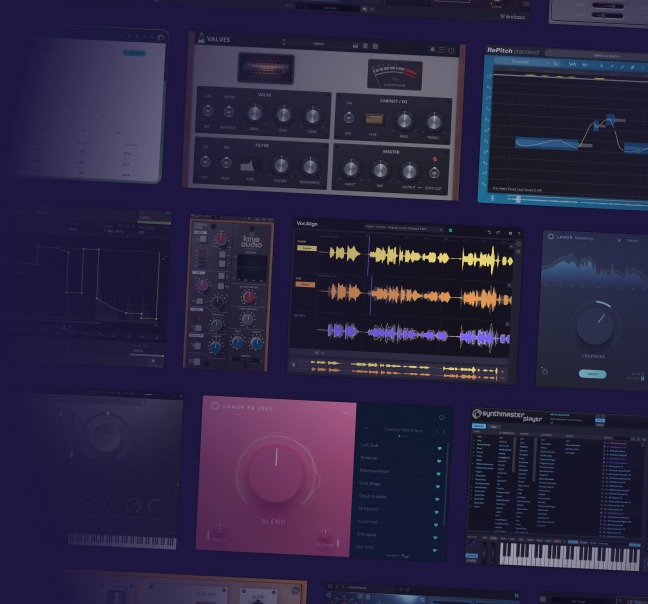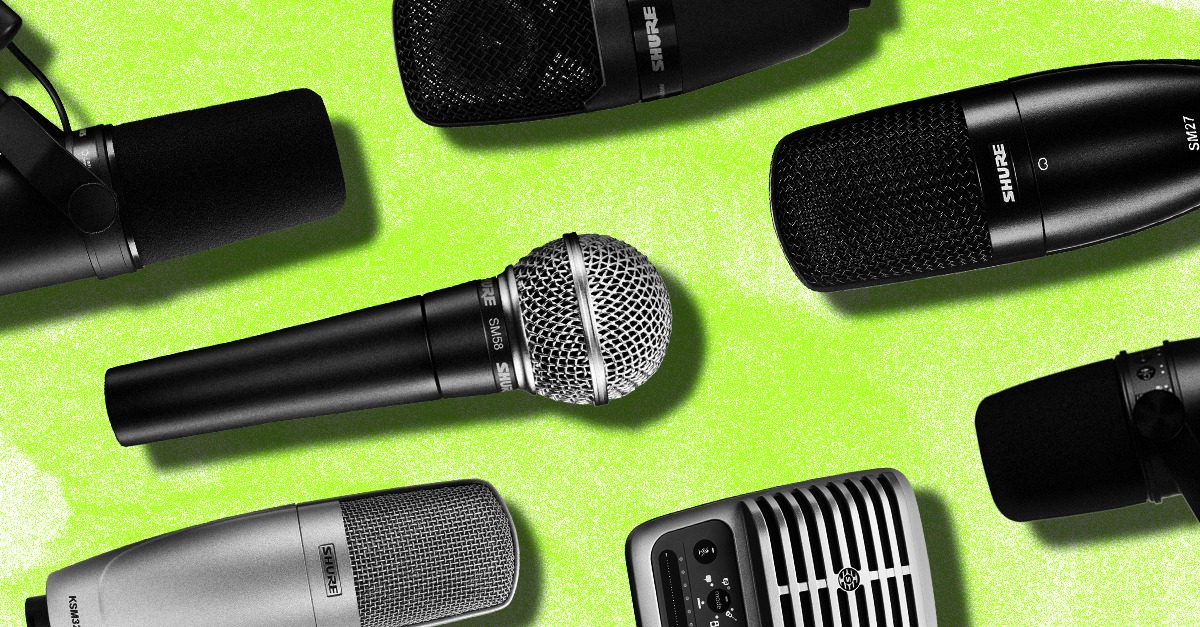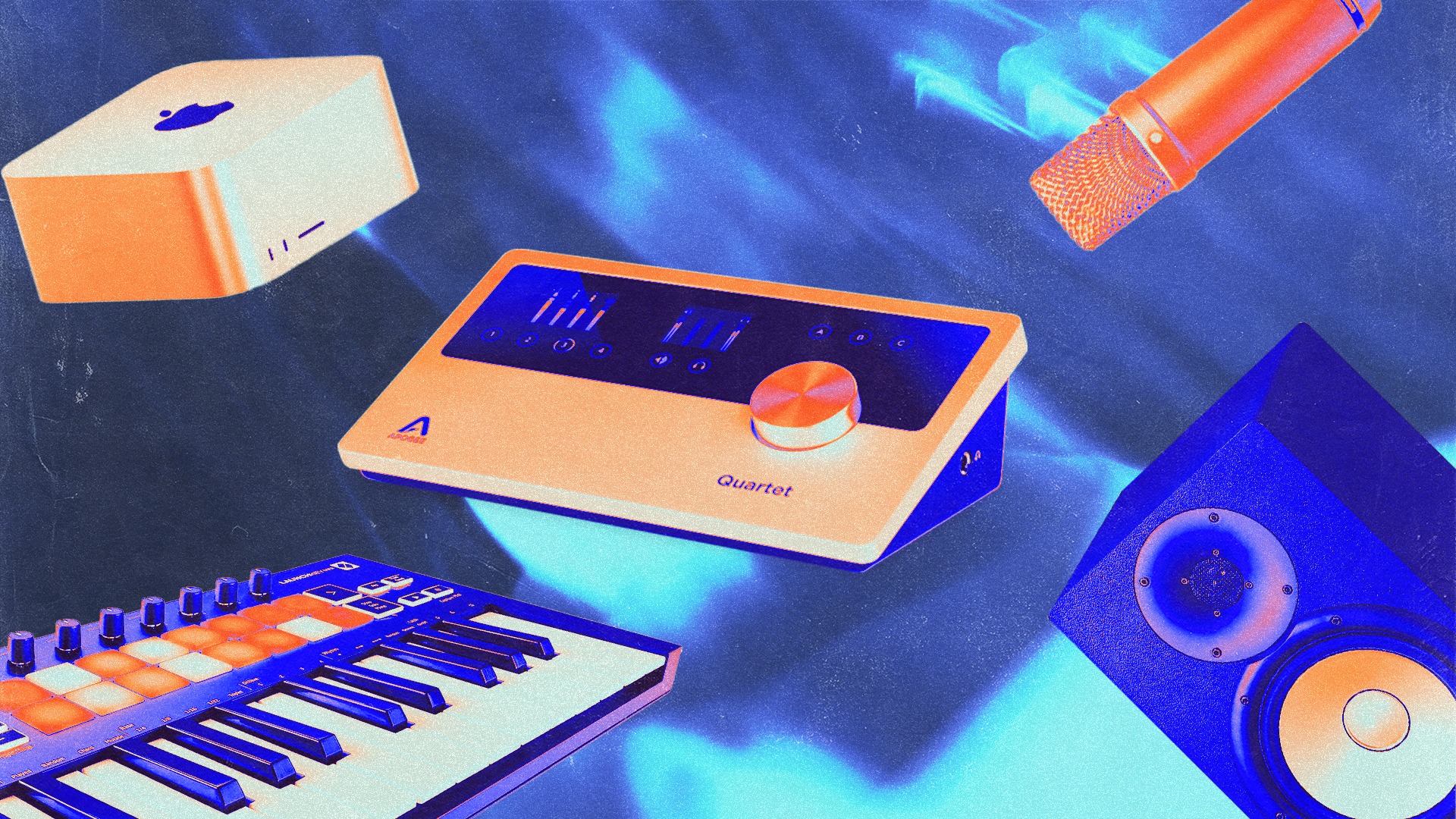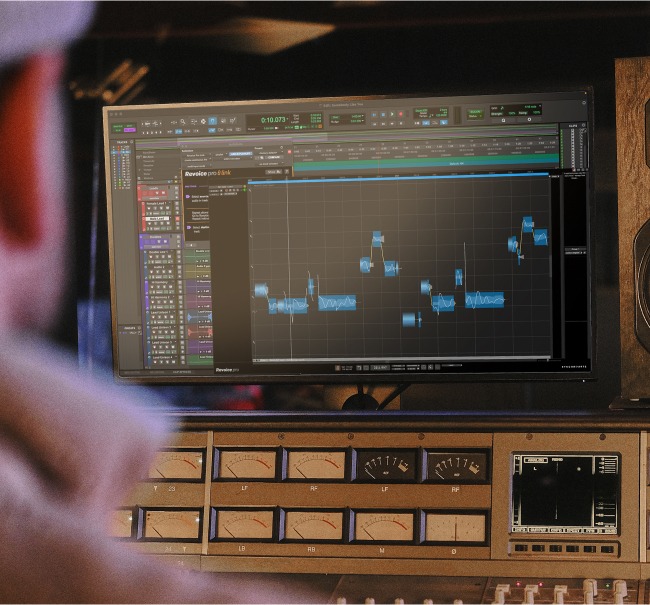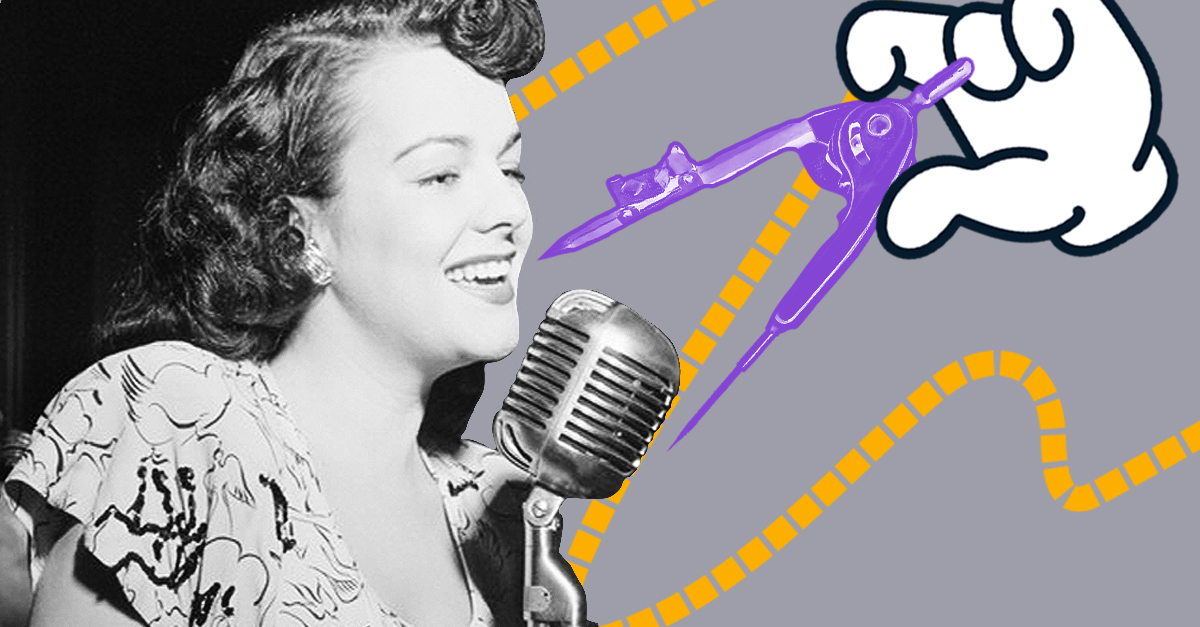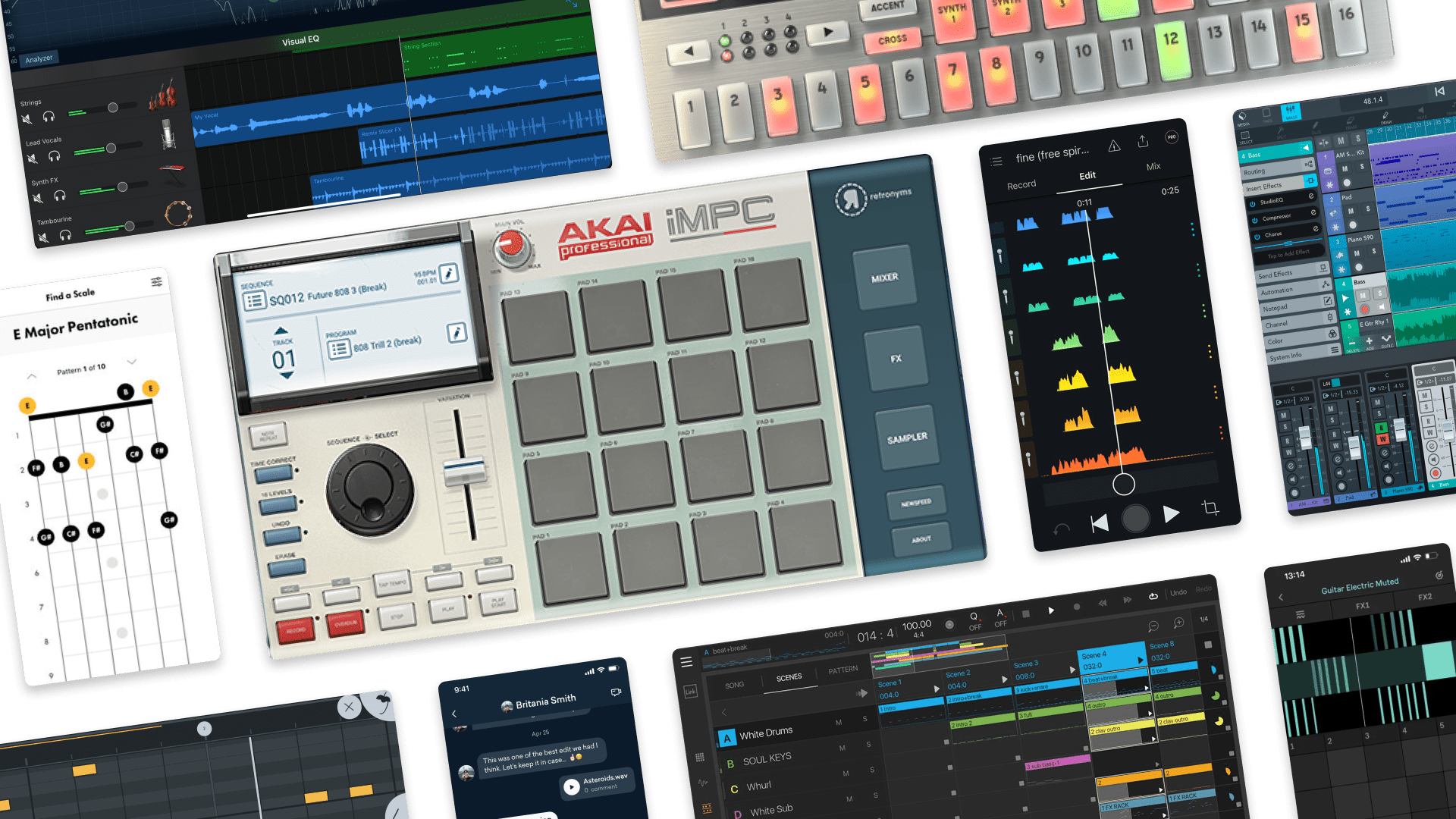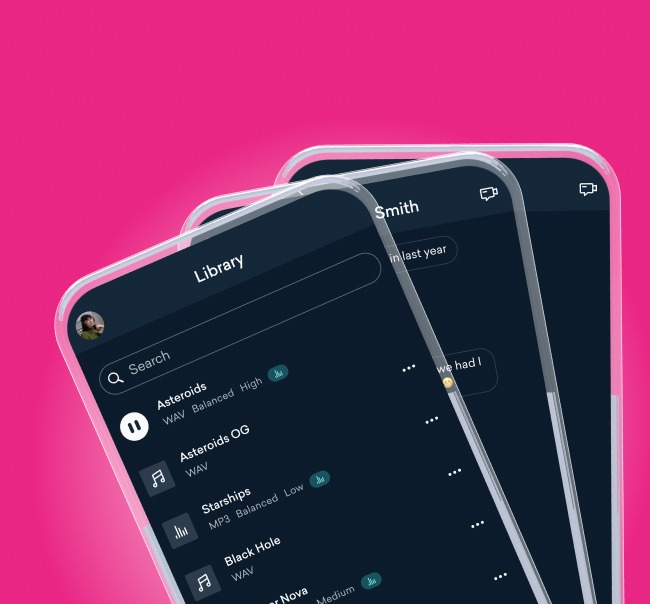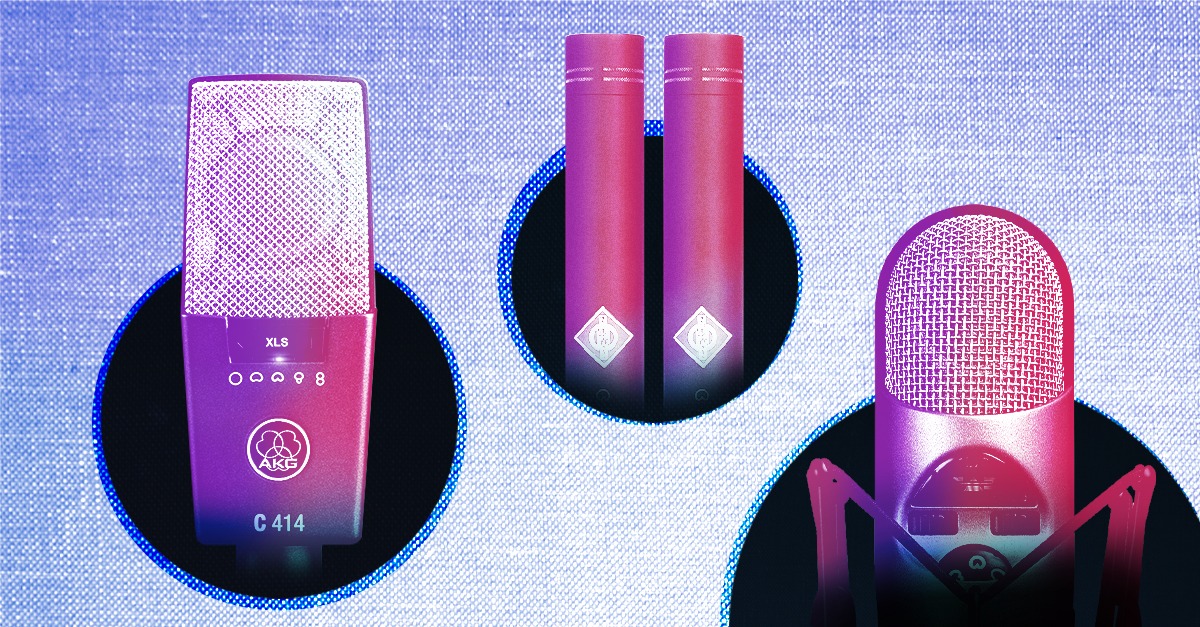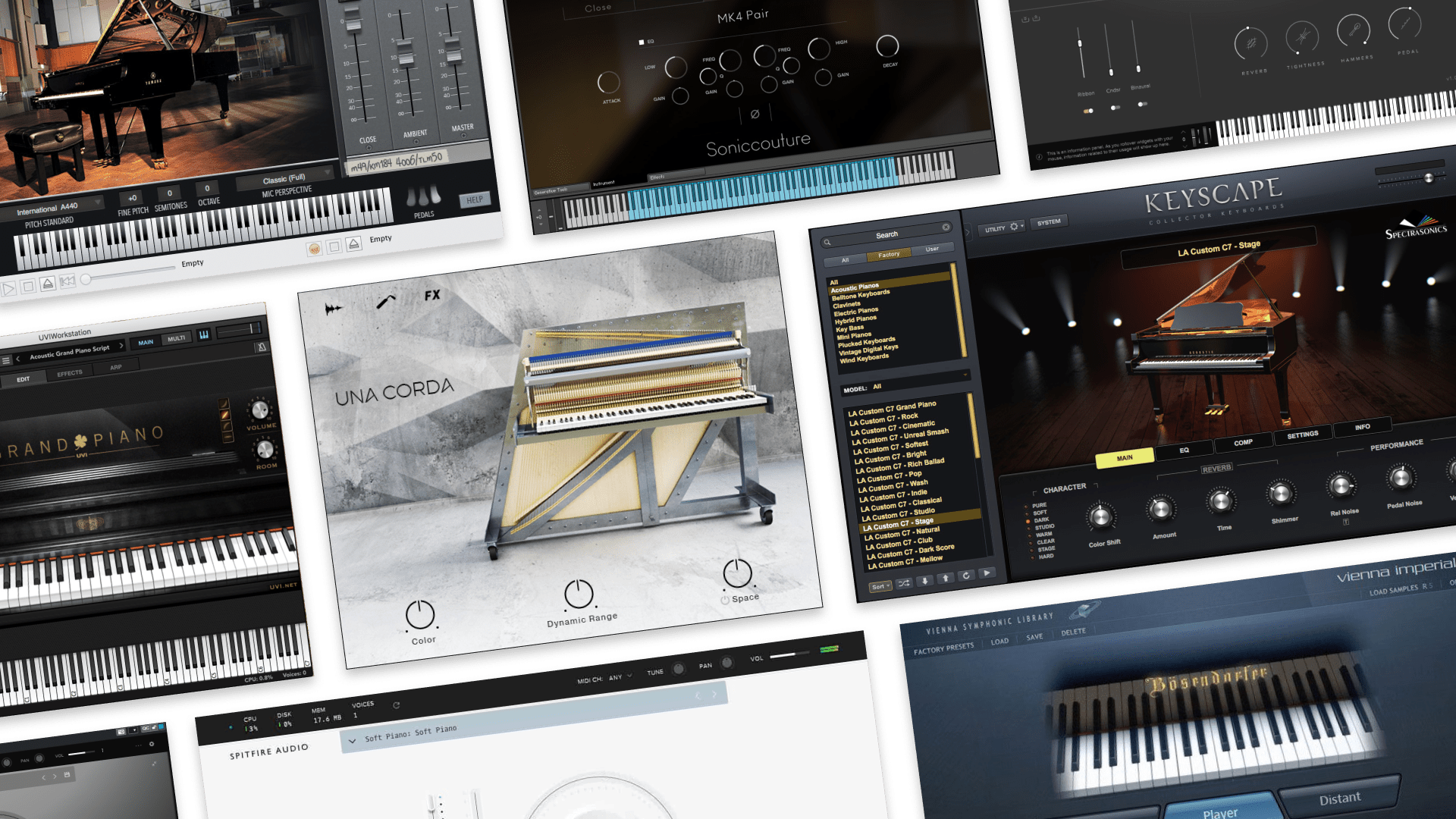
The 11 Best Microphones for Recording Vocals at Any Budget
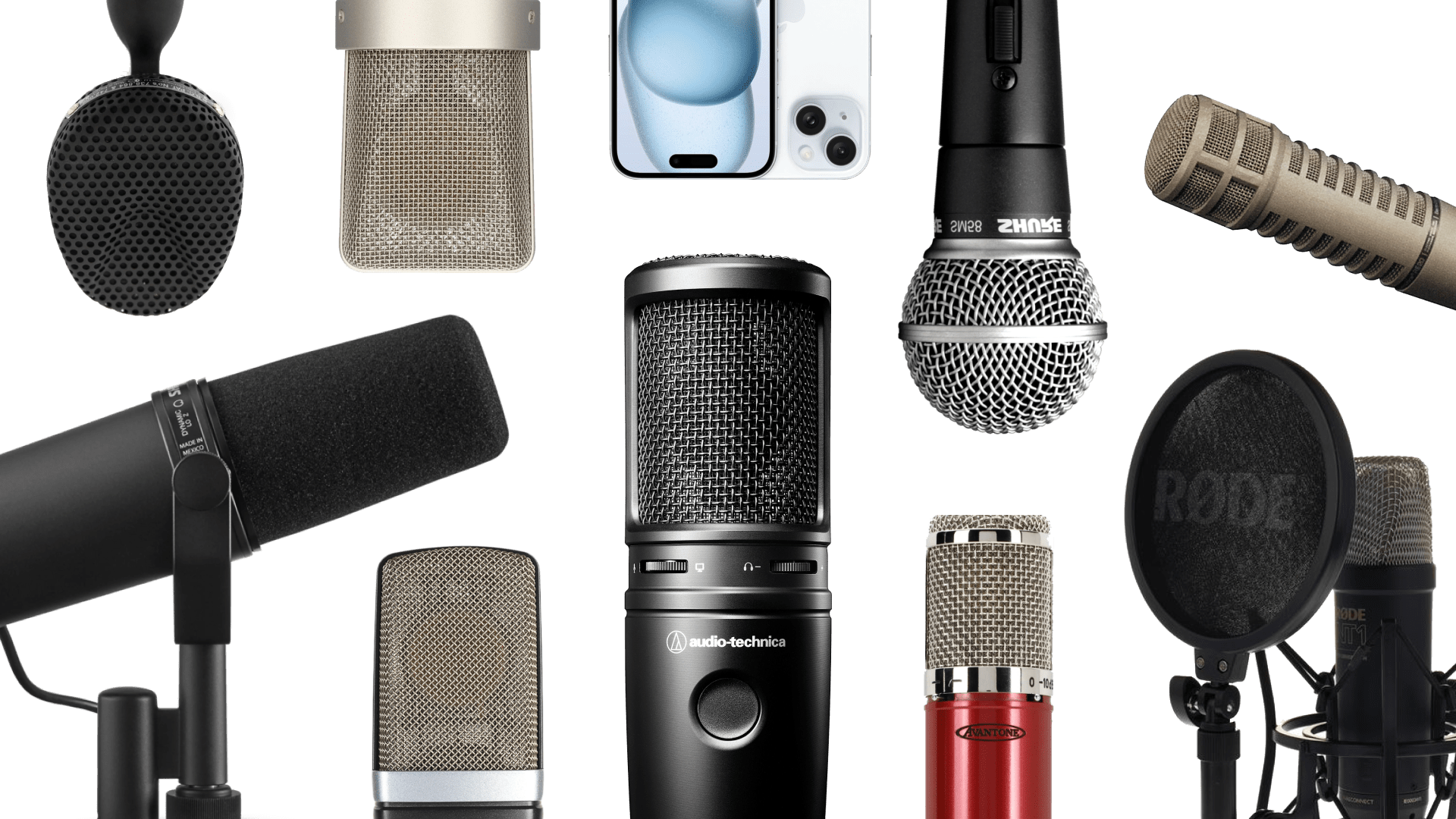
Your vocals are personal, and so is your choice of mic. When searching for the best vocal mic, picking the mic that suits your vocal tone best will often make the biggest difference.
I’ve used many vocal mics in my time as a recording artist with several different music projects. Given all this experience, I have a good idea of how each vocal mic we tested in this list responds to the many variables that come into play when recording vocals like studio setting, vocal timbre, background noise and mic type.
To help you find the best vocal mic for your vocals on this list we reviewed each mic’s frequency response, background noise sensitivity, clarity, build quality and overall vocal tone character.
We also picked a selection of mics at various prices, so you’re sure to find something that matches your budget.
Ultimately, your vocal range, the genre of music you sing, and even your voice’s unique characteristics and timbre will influence which mic suits you best.
There’s a mic out there that will complement the sound of your voice perfectly. Let’s go find it.
How to find the best vocal mic for you?
Vocals are the focal point of most music, so it’s super important to get the best recording possible.
Here’s our quick guide to picking out a microphone for your voice.
Practice your vocals
The truth is a microphone can only do so much to make your vocals sound good. There’s no vocal mic that can save a poor take.
The best way to get a good vocal take is to start by practicing your vocals, honing your sound and perfecting your tone. Consider hiring a vocal coach, if you think you need help finding your best vocal sound.
Set a budget and try as many mics as you can
Throw out your notions of price for a second—you might sound amazing on a budget mic that costs a fraction of a professional studio mic.
So, if you can, try a few different mics out.
At the very least, test out a dynamic mic, a condenser and a large-diaphragm condenser. Each of these comes with its recording qualities, pros and cons.
Consider your recording environment
What kind of studio will your mic be used in?
If you have to record in a noisy environment, where your vocal take could easily be ruined, you may want a dynamic mic that effectively handles background noise.
If your studio is well-treated and quiet, you can get more detailed recordings with a highly sensitive large-diaphragm condenser.
Think about your genre
The tone of your vocals will also affect vocal mic choice.
Pop, R&B, and country vocals tend to feature highly dynamic vocals that quickly go from quiet to loud—so a condenser that can capture that range might be a better choice over a less sensitive dynamic mic.
If you’re a rapper or you front a rock band, you might need something that can handle the harsher, louder tone of your vocals. You’ll also need to manage the proximity effect and plosive “B” and “P” sounds.
If you’re looking for a warm vintage tone that emulates the sound of 60s and 70s recordings, you may gravitate towards a tube mic or a condenser that’s been modeled after vintage mics.
Now that we’ve established a few variables to consider when shopping for a new microphone, let’s take a look at 10 unique vocal mics that match several vocal styles and budgets.
Let’s dive in.

In this video we unpack 7 essential steps for recording great vocals.
1. Shure SM7b: Best Overall Microphone
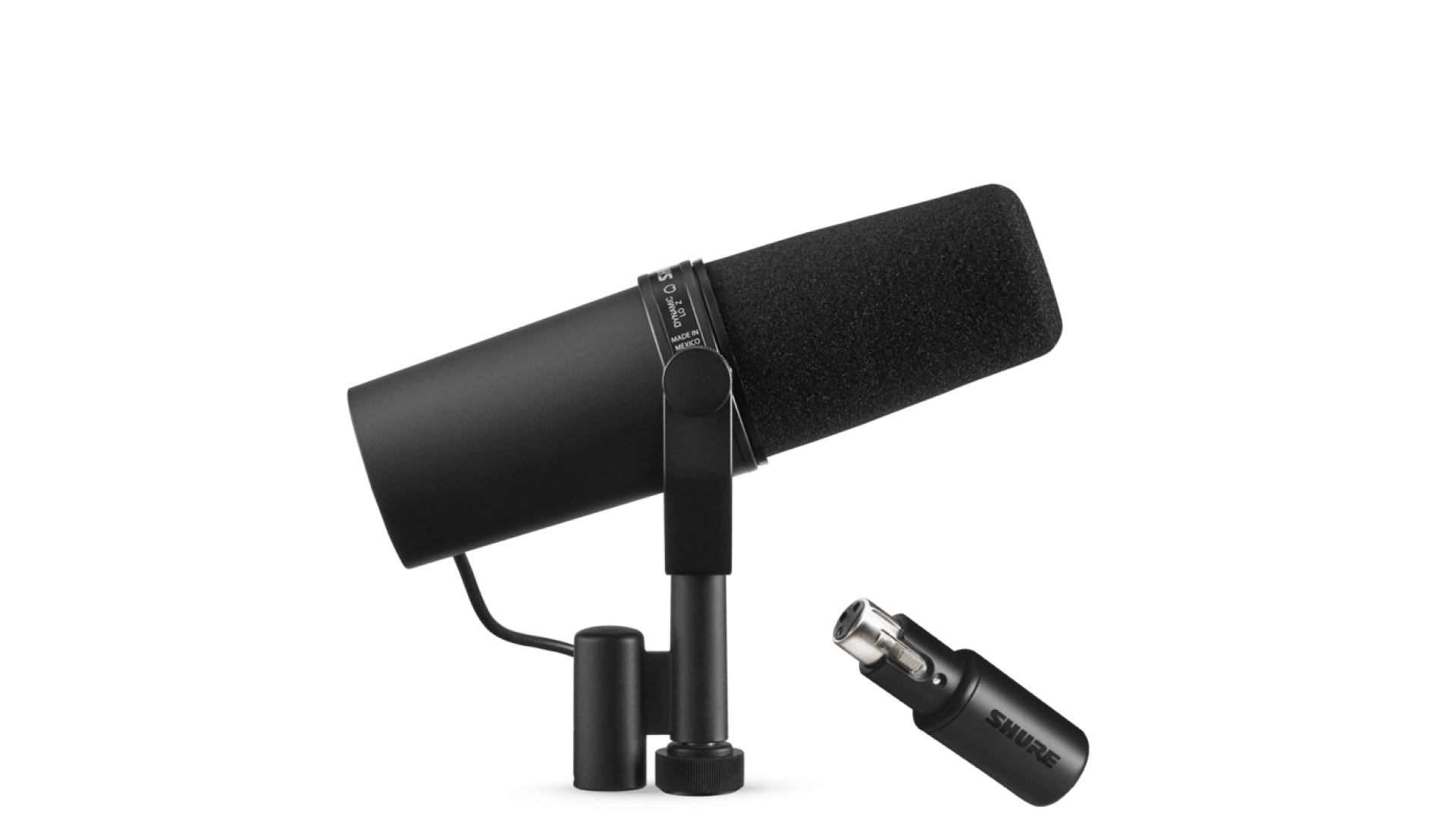
Quick overview of the Shure SM7b
| Type: | Dynamic microphone for studio vocals |
| Polar pattern: | Cardioid (heart-shaped) |
| Frequency response: | 50Hz - 20KHz |
| Additional features: | Low cut filter switch, presence EQ boost switch |
| Suitable for: | Rap, pop, R&B, proximity effect, spoken word |
| Price: | $399.00 |
Pros
- Durable, simple to use
- Wide frequency range
- Solid presence, especially with EQ boost switch
- The low-cut switch can cut out muddiness and eliminate unwanted proximity effects
Cons
- Records quieter than condenser microphones
- Slightly more on the pricey end
About of the SM7b
Shure’s SM7b is a capable microphone that’s a worthy investment despite its cost.
It’s larger than most other dynamic microphones, but its sturdy build on a swiveling mount helps eliminate any stand-bumping sounds and will feel solid on any microphone stand.
Because it’s a dynamic microphone, it doesn’t require any phantom or external power sources. You can pretty much plug it into your mixer with an XLR and start using it.
This also makes it significantly more durable, since dynamic mics are known for being able to take a beating. They break much less often because they don’t use sensitive diaphragms or ribbons that can easily tear.
Frequency response
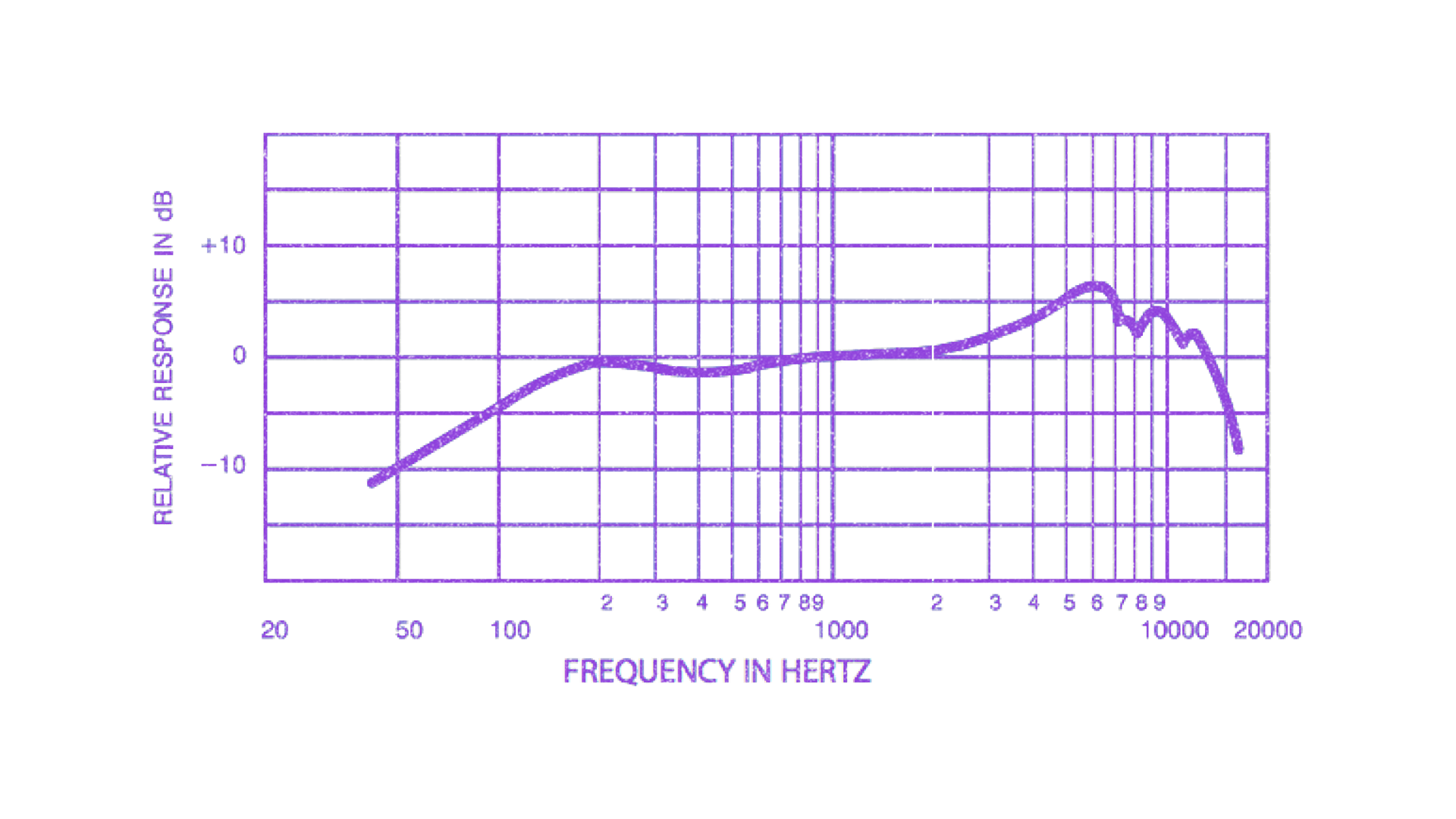
Credit: Shure Microphones
The SM7b has the narrower frequency response expected from a dynamic microphone.
But even though it’s not as sensitive to extreme frequencies at the edge of human hearing, the microphone is well suited to capture vocals with its flat response and boost at 3KHz.
Unlike other microphones on this list, the SM7b has a slightly more dramatic cut after 7KHz that dials back airy frequencies at the higher end of the spectrum.
However, it comes with a switch that boosts frequency response at the 6-8KHz range, which will help add an extra level of presence, sizzle and sparkle to a vocal recording.
Its other switch activates a low-cut filter that swoops out frequencies below 400Hz, helping to eliminate muddiness, reduce proximity effect, and prevent popping and bumping sounds.
Polar pattern
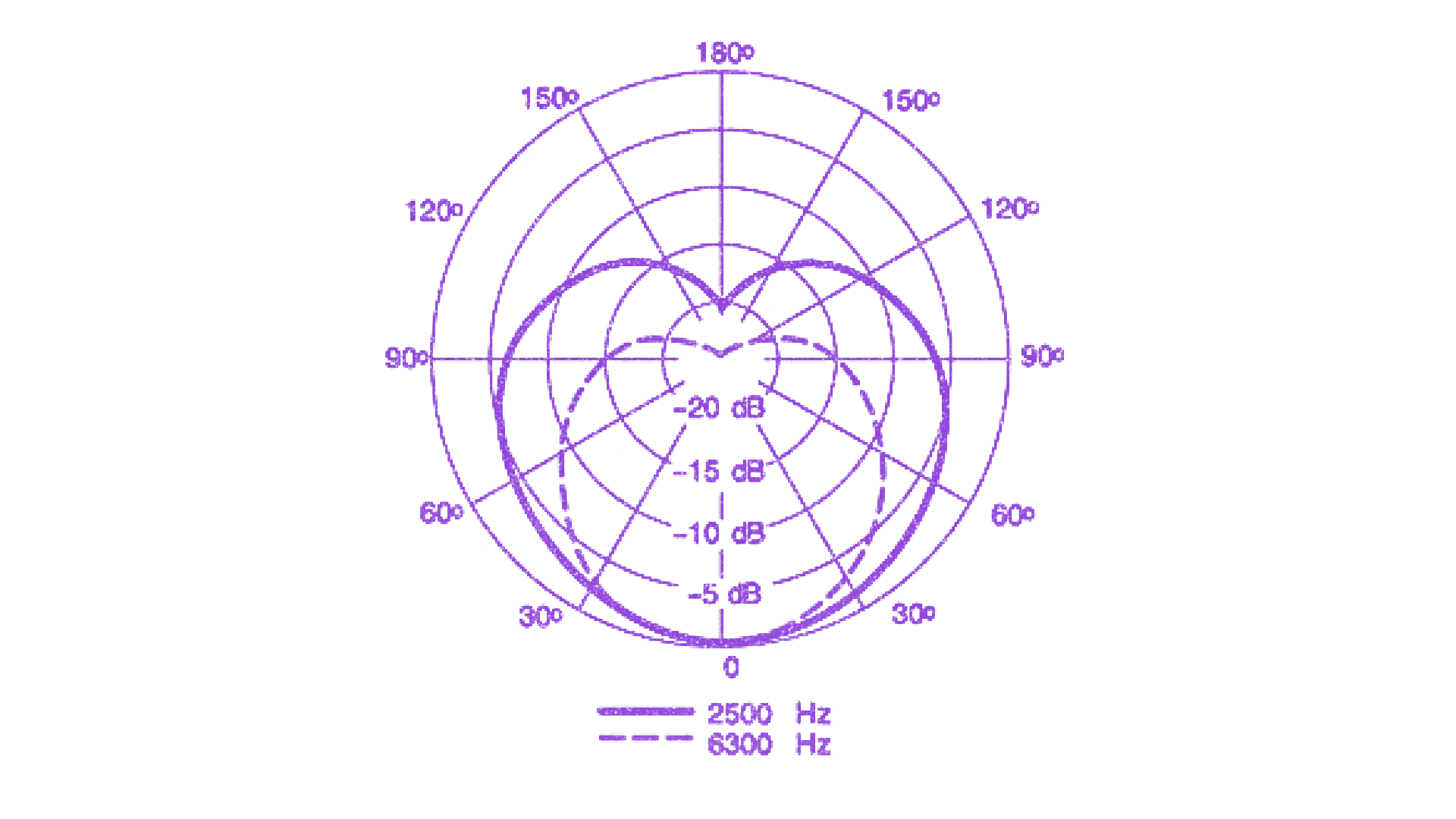
Credit: Shure Microphones
The SM7b uses a standard cardioid polar pattern typical of dynamic microphones.
This helps the microphone do a great job of rejecting noise outside of its recording range, so you won’t hear much of anything else in the room except what’s recorded near the microphone.
That’s why the SM7b is ideal for home recording, since ambient noise from the street or neighbors is much less likely to make it into anything it records.
The tradeoff is that the microphone is known for having a relatively quiet output, so you may need to run it through a preamp or gain stage to record quieter vocal sources.
What our testing says
While this list isn’t intended to rank any one microphone over the other, there’s a reason why the Shure SM7b needs to be talked about first. It’s been used in studios everywhere and it tends to sound great.
From Michael Jackson to Taylor Swift and so many rappers, the SM7b is easily one of the most legendary studio microphones ever.
It’s durable, produces a reliable sound that can easily be worked with and it’s the workhorse behind countless studio vocal recording sessions.
But it’s not necessarily the best for recording quieter vocals, more dynamic vocals, or vocals that require more frequency response at the middle end.
Where it lacks in frequency response, it certainly makes up for in presence, making it an excellent choice for punchy pop vocals, rap and spoken word.

In this video we tested and reviewed the Shure SM7b and the Shure SM58 microphones.
2. Audio Technica AT2020: Best Mic for Home Studios
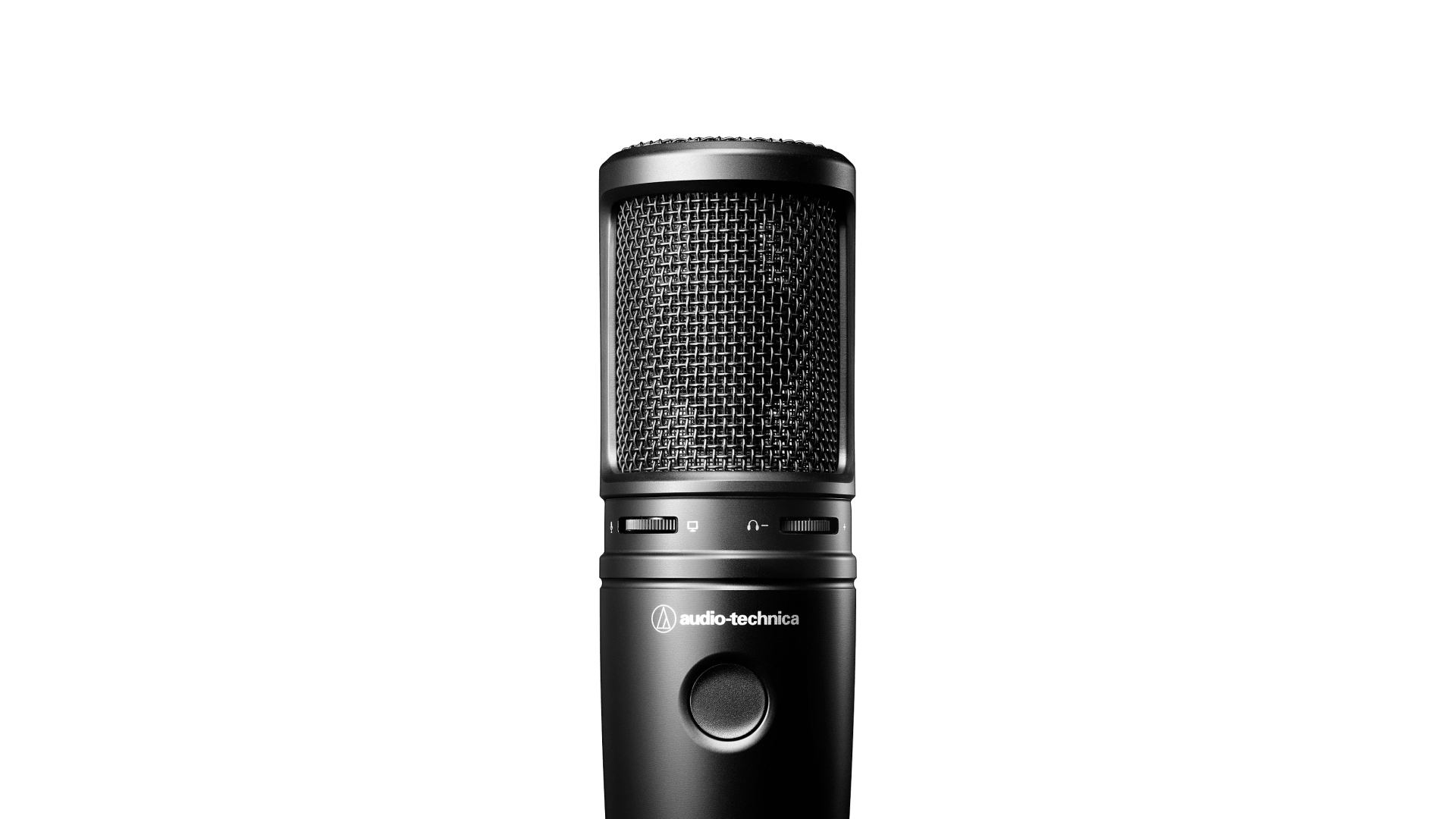
Quick overview of the AT2020
| Type: | Condenser |
| Polar pattern: | Cardioid |
| Frequency response: | 20Hz - 20KHz |
| Additional features: | Included shock mount |
| Suitable for: | All-around mic, good for most vocals |
| Price: | $149.00 |
Pros
- Great sound for a very affordable mic
- Perfect for starter home studios
- Works well for dynamic vocal takes with a range in volume
Cons
- Usually needs a pop filter
- Sensitive to ambient noises in noisier studios
About the AT2020
The AT2020 is a great condenser microphone for upstart creatives. It was designed and priced for bedroom producers and home studio enthusiasts.
Our testing found that the mic is incredibly versatile and sounds good in many recording applications, especially for vocals.
If you’re building out a simple home studio setup, we think the AT2020 could easily be your best option.
Frequency response
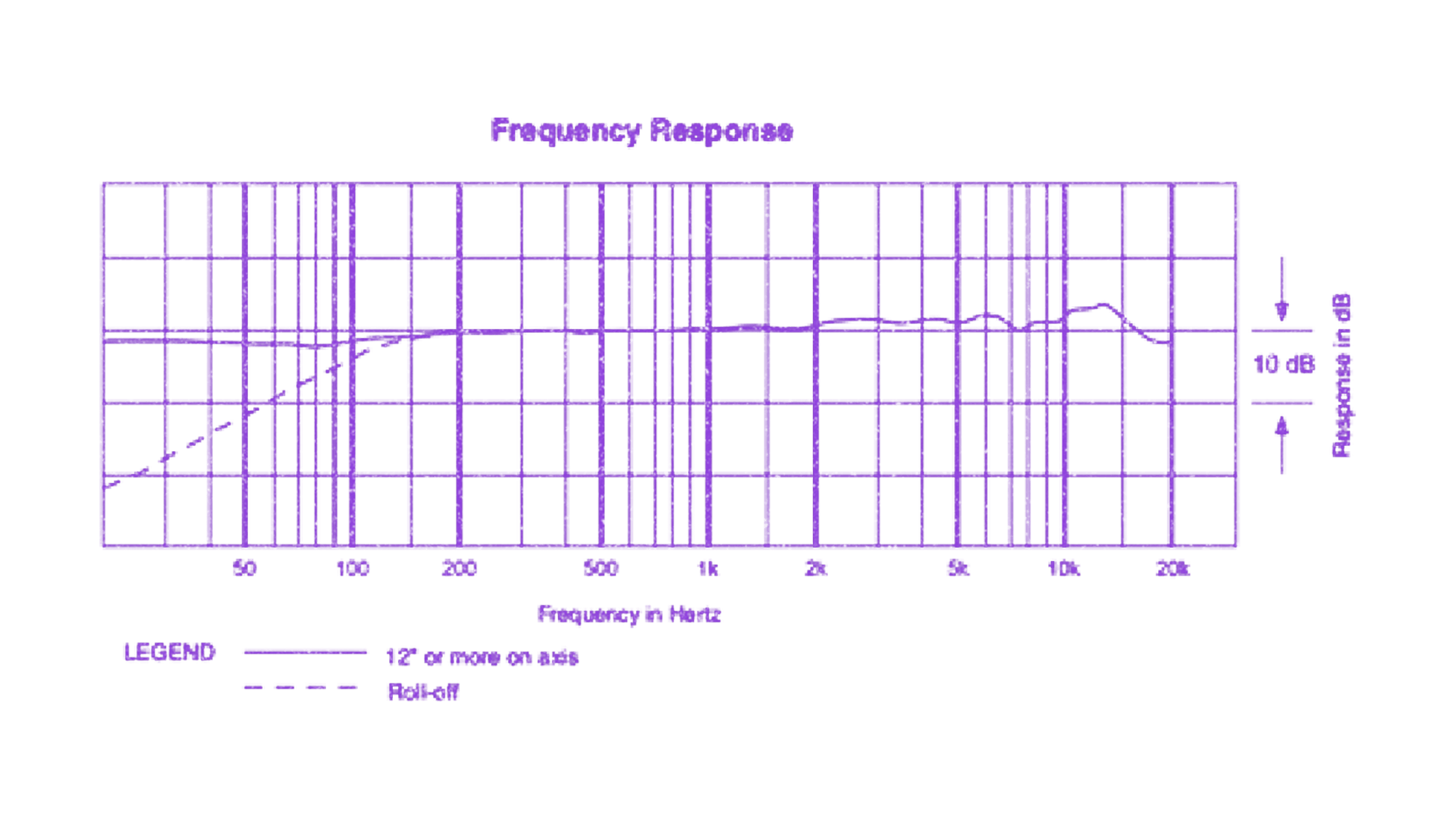
Credit: Audio Technica
The AT2020 has the wide frequency response we expect from condenser microphones.
But, unlike other condensers on this list, the AT2020 does not roll off the low end.
Despite that, the AT2020 handles low-end very well without becoming muddy for vocals, while keeping it reasonably well suited for low-end instruments.
For high-end frequencies, the AT2020 only subtly boosts at 5KHz, with a subtle cutoff at 15KHz.
We found that even with the minimal boost the mic produces a shining, sparkly high end that’ll nicely accentuate vocals without sounding overly harsh.
Polar pattern
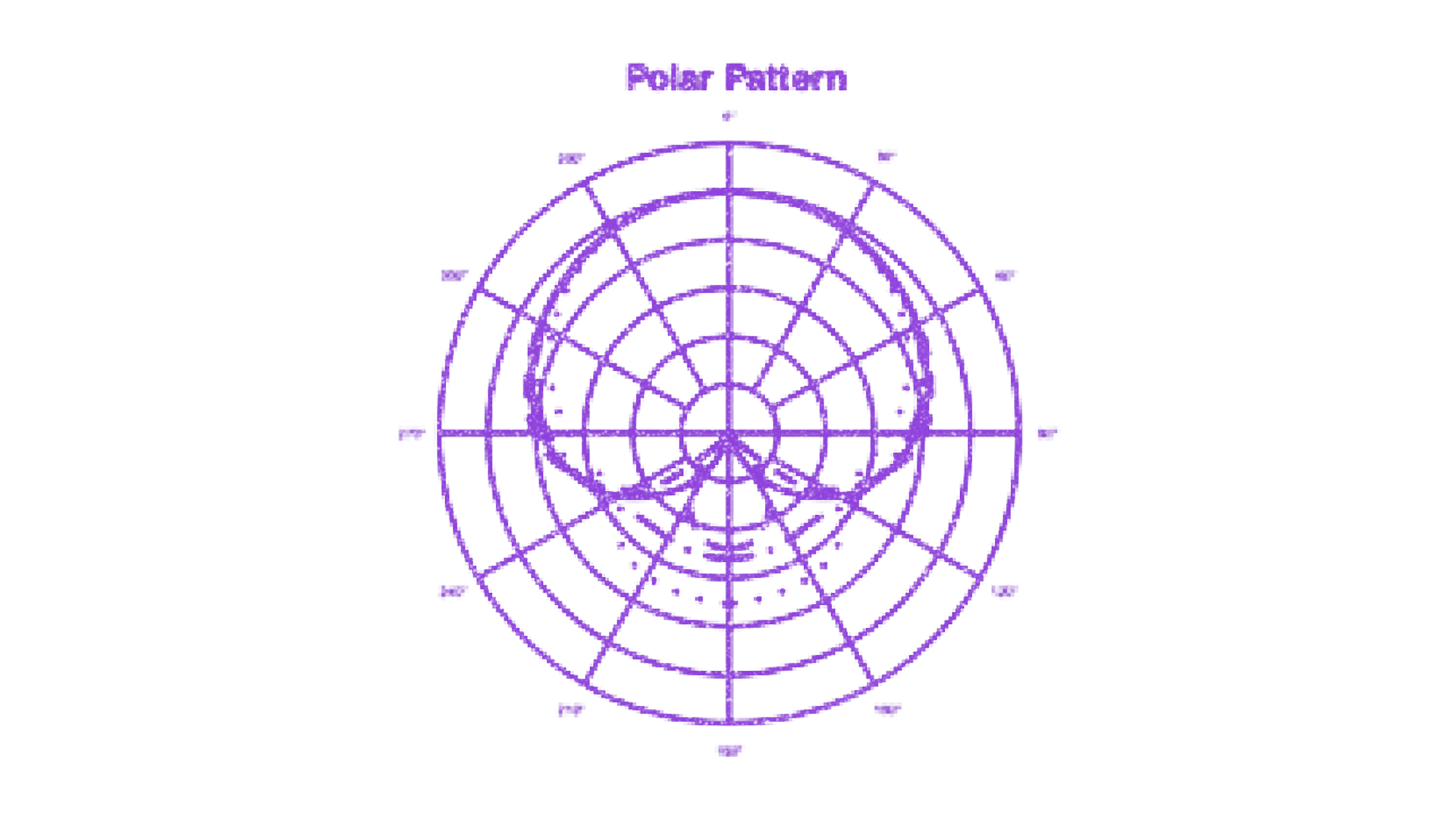
Credit: Audio Technica
Audio Technica’s AT2020 uses a Cardioid polar pattern.
The front address microphone will effectively capture whatever’s in front of it while rejecting most background noise.
Even in non-acoustically treated environments like apartments and home studios, the mic fared well in various tests and didn’t pick up too much background noise.
At close proximities though, we found that the mic tends to emphasize proximity effects and plosives in vocals. You may benefit from investing in a pop filter to help eliminate unwanted pops and bumps.
What our testing says
Overall, the AT2020 is the perfect budget microphone for home studios, and creative types.
Its flat frequency response produces warm, smooth vocals with just the right amount of shimmer and brightness at the top end.
If you’re working on a bedroom pop album and are looking for brighter, more controlled vocal takes than say an SM58, we think you should take a look at this mic.
In testing, the mic was a bit sensitive to background noise and rumbled when attached to a stand. We suggest getting the attached wire shock mount to keep the mic from picking up footsteps and other rumbling sounds.
3. LCT 440 PURE: For pure studio-quality sound
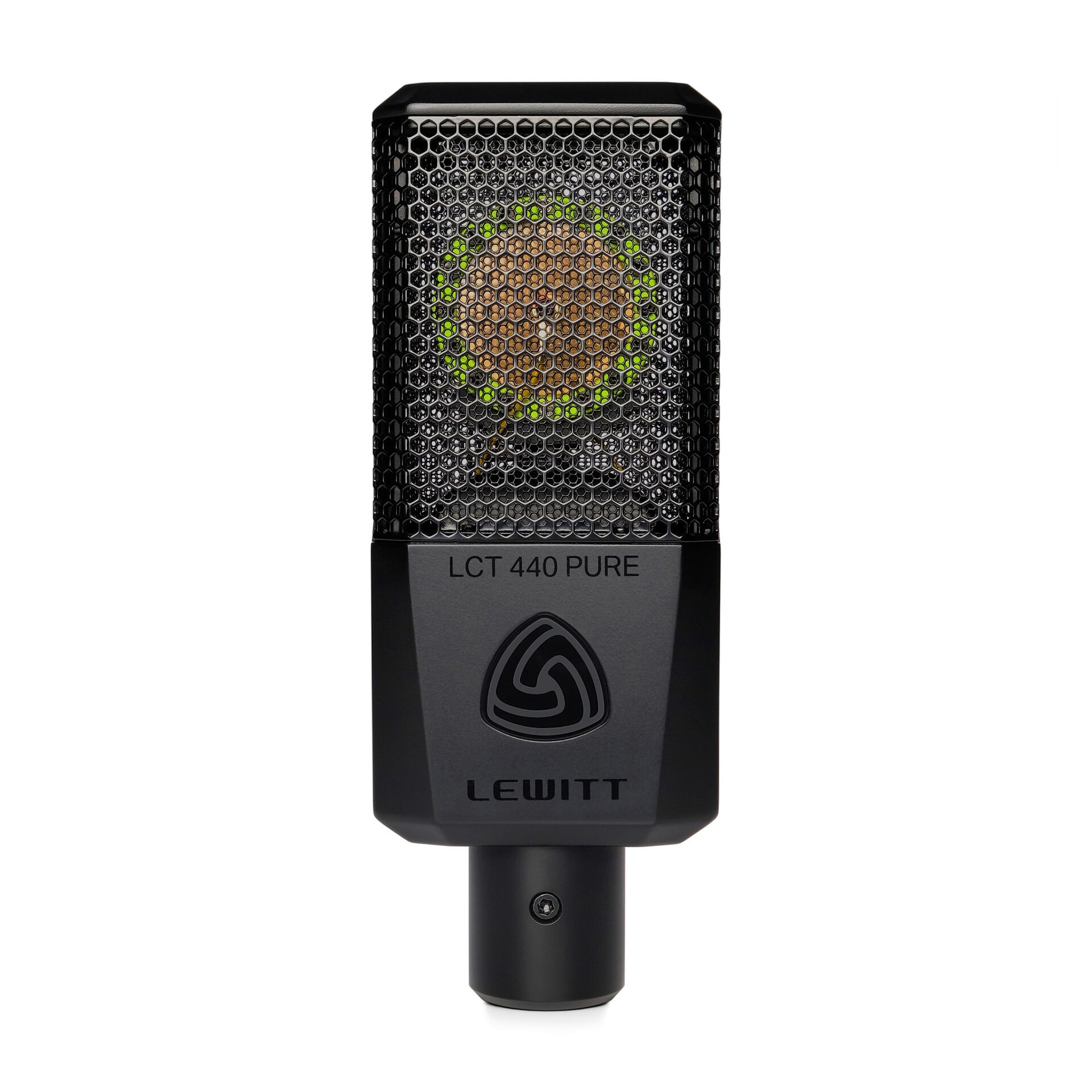
Quick overview of the LCT 440 PURE
| Type: | Condenser |
| Polar pattern: | Cardioid |
| Frequency response: | 20Hz - 20KHz |
| Additional features: | Included shock mount, magnetic pop filter, transport bag |
| Suitable for: | For vocals, podcasts, and instrument recording |
| Price: | $319.00 |
Pros
- Record-Ready sound that sits well in the mix
- Compact and camera-friendly design
- High-end specifications
Cons
- No settings like low-cut filter
About the LCT 440 PURE
The LCT 440 PURE is a studio microphone that excels in both vocal and instrument recording. Thanks to its outstanding technical specifications, it is a microphone you will never need to upgrade.
Although its sound character will make you sit great in the mix, you can also effortlessly shape the tone to your liking.
Frequency response
The LCT 440 PURE does deliver a recording quality you’d expect from studio microphones priced two and even try times higher.
It also can handle bass-heavy instruments very well due to its high max SPL and neutral response for the key frequencies from 20Hz to 1KHz.It also can handle bass-heavy and loud instruments very well due to its high max SPL and neutral response for the key frequencies from 20Hz to 1KHz.
For extra speech comprehensibility and to make sure your voice sits well in the mix, the LCT 440 PURE boosts around 3 Hz and 13KHz. This gives a modern-sounding touch to most voices.
Polar pattern
LCT 440 PURE uses a Cardioid polar pattern which makes it most sensitive to the front, less sensitive to the sides and rejects background noise efficiently.
In non-acoustically treated spaces like apartments and home studios, it’s always better to reduce the distance to the microphone to get a better direct-to-room sound ratio.
Just make sure you don’t directly sing or speak into the capsule when you are extremely close. Then it’s always better to slightly tilt the microphone for better results.
What our testing says
Overall, the LCT 440 PURE is for beginners and professionals who look for a solid package that will produce outstanding recordings for years to come.
Its Record-Ready sound makes your vocals sit well in the mix without a lot of tweaking and its specifications ensure you can handle any source with ease.
In testing, the magnetic pop filter was not as effective as a goose neck pop filter that introduces a greater distance to the microphone capsule.
4. Shure SM58: Best Mic Under $100
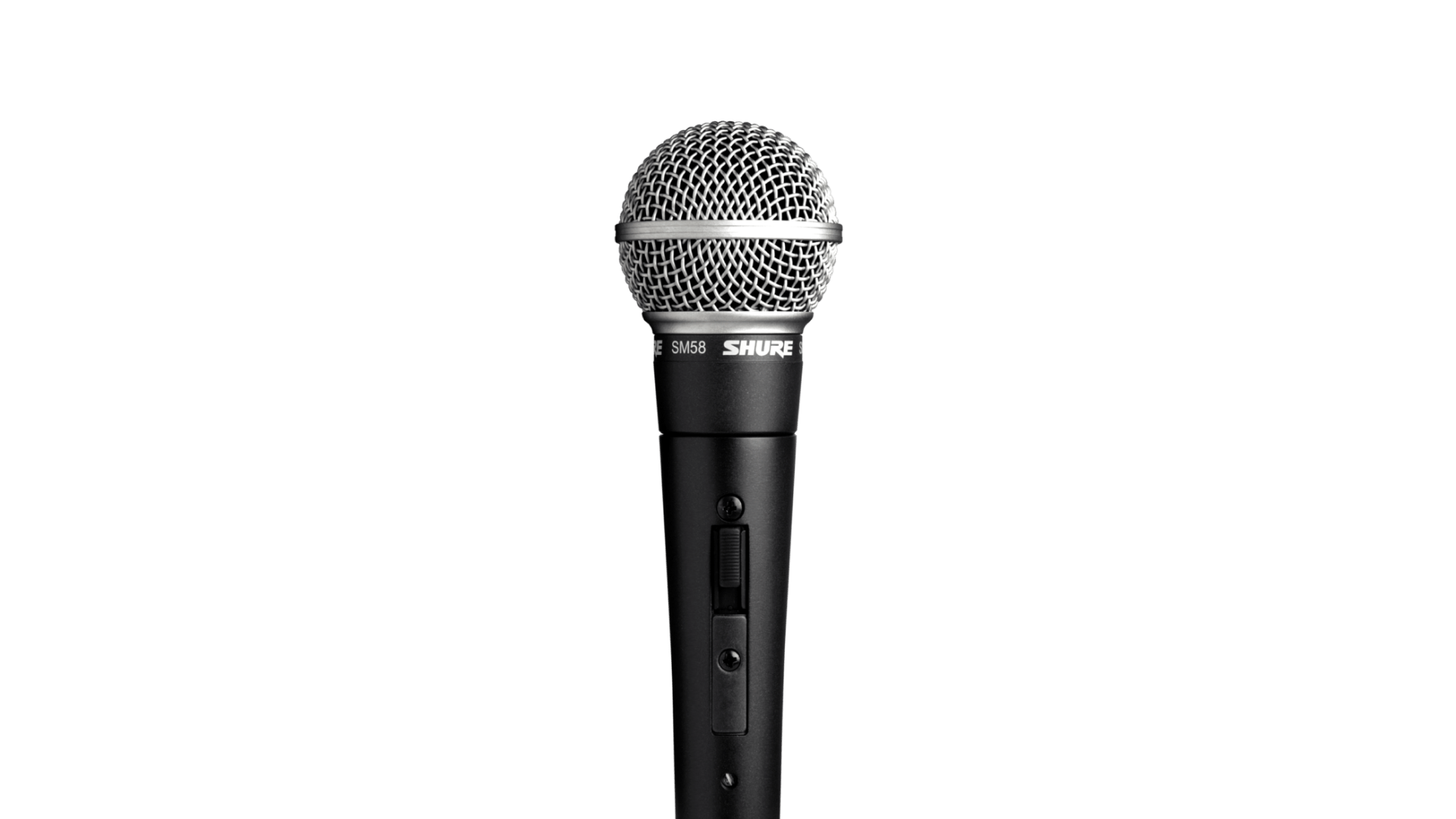
Quick overview of the Shure SM58
| Type: | Dynamic |
| Polar pattern: | Unidirectional Cardioid |
| Frequency range: | 40Hz to 15 kHz. |
| Suitable for: | Live vocal performances |
| Similar microphones: | AKG P5i, Sennheiser e835 |
| Price: | $99.oo |
Pros
- Affordable
- Industry-standard
- Excellent for live performance
- Durable design
- Good background noise rejection
Cons
- Limited frequency response
- Quiet output
- Not as well suited for studio recording
About the SM58
The SM58 is the reason why “mic drop” is a turn of phrase, since you can literally drop it and it won’t break.
That’s because the dynamic microphone doesn’t have moving parts or breakable diaphragms like its condenser and ribbon microphone counterparts.
For these reasons, the SM58 is a durable workhorse that is generally favored for live performances where a microphone will likely need to endure all sorts of bumps, falls and spills.
Arguably, the SM58 is underrated in its ability to produce high-quality vocal recordings. In the hands of a skilled vocalist, it’ll generate an excellent recording.
That’s why you’ll be hard-pressed to find a professional studio that doesn’t have an SM58 in its microphone arsenal.
Frequency response
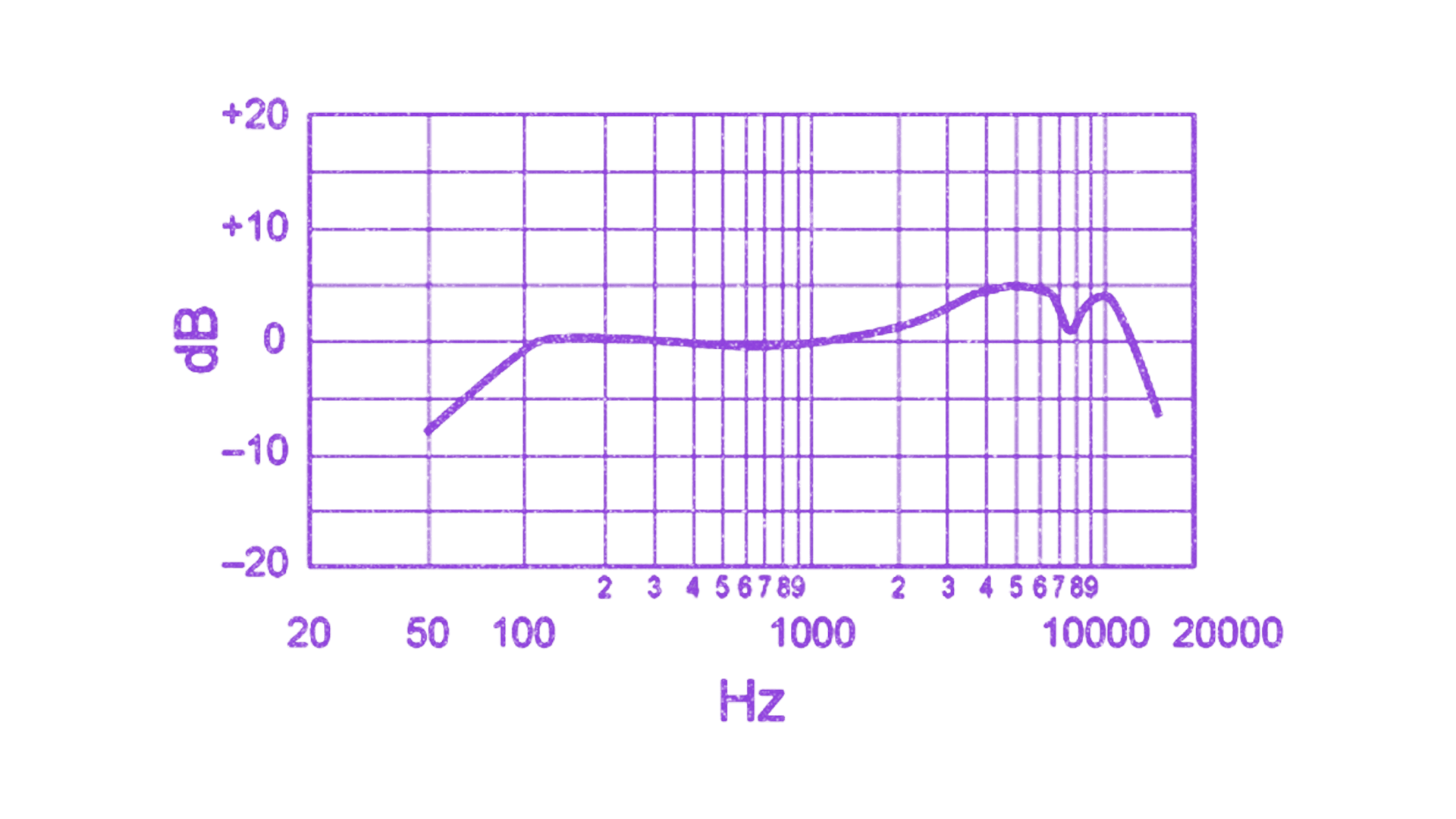
Credit: Shure Microphones
To handle the demands of live performance, SM58 has a wider frequency response than other dynamic mics, with attenuation done at the bass end of the frequency spectrum to help with proximity effects.
At the top end, the microphone slightly boosts frequency response at 4K with a cut at 7K.
This boost helps to add a bit of sparkle to the airy part of the human voice’s timbre, while the cut at 7k eliminates harsh sibilant “S” sounds from vocal recordings.
However, due to the overall boost after 4k, it’s recommended to use the microphone with a pop filter when in a studio setting. This will combat plosive, popping sounds that tend to come out in close-mic recordings.
Polar pattern
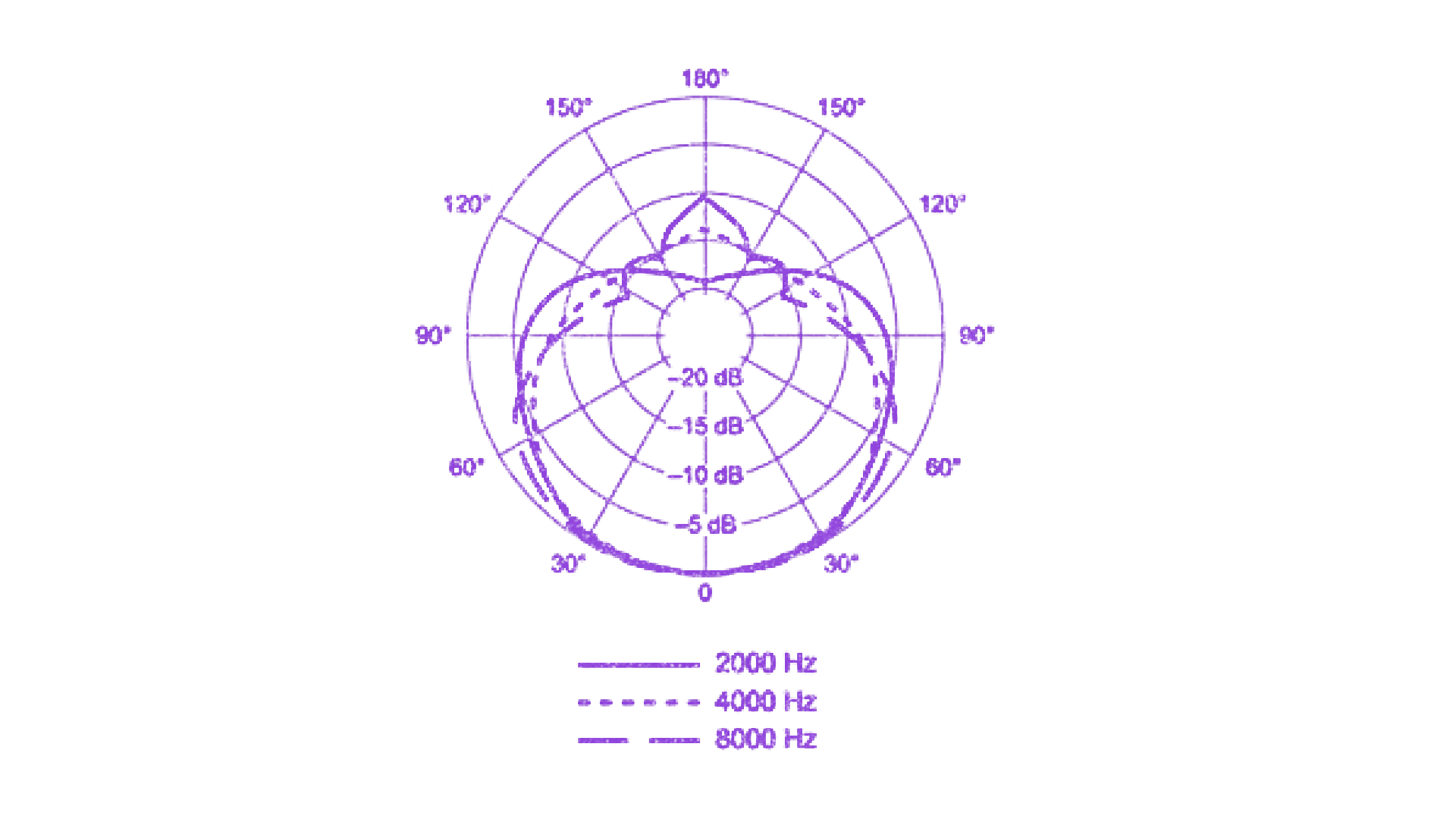
Credit: Shure Microphones
The SM58 uses a unidirectional cardioid polar pattern, meaning it does a great job recording sound sources that are close to its grille.
The highly directional nature of the microphone makes it suitable for producing relatively clear recordings in settings with lots of background noise, which is a major reason why it works so well in live settings.
This also makes it a great choice for home studios that don’t have acoustic treatment or are prone to loud ambient noises.
The tradeoff, which is common among all dynamic mics, is that the microphone’s recording output is somewhat quieter than its condenser counterparts. This makes the SM58 better suited for louder vocal takes.
What our testing says
Overall we found that SM58 produces consistent recording for all kinds of vocals. It’s a great, affordable option to have in your studio.
But its quieter output and flatter frequency response make it better suited for louder, less dynamic vocal takes.
And if you’re recording a dull voice, a condenser microphone with a boost at the top end might be able to produce something a bit more full and dynamic.
In general, though, there’s no shame in using an SM58 as a home studio recording option.
If you do choose to use the SM58 for studio recording, consider investing in an inexpensive pop filter to help deal with the mic’s tendency to pick up plosive “popping” sounds..
The good news is that you can get your hands on one for less than $100, especially if you turn to the used market—you’ll find many of these on your local Facebook Marketplace or Craigslist.
5. Your Smartphone’s Microphone: Best Free Microphone
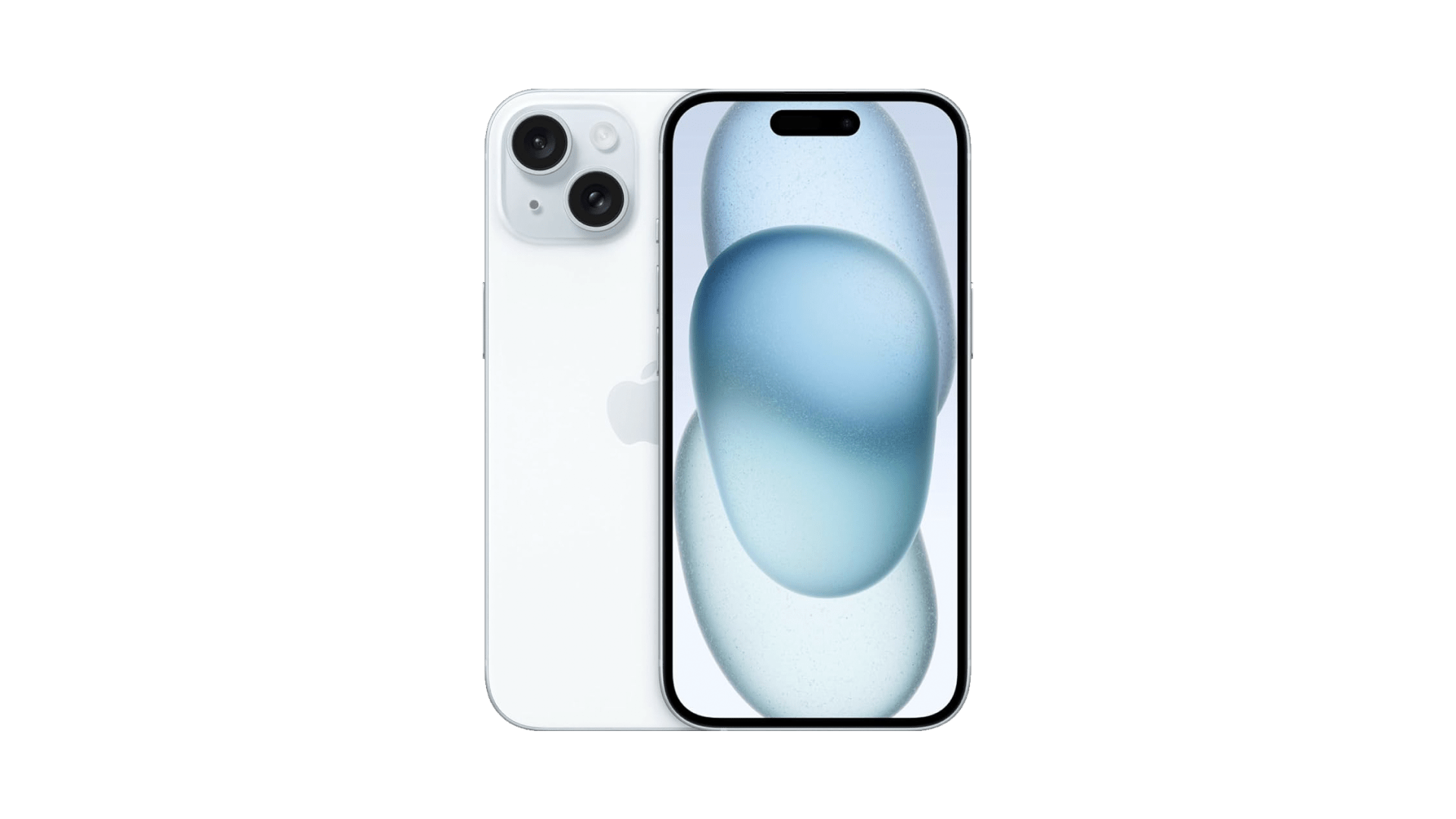
About your the mic in your Smartphone
| Type: | Condenser |
| Polar pattern: | Omnidirectional |
| Frequency response: | 20Hz -18KHz |
| Additional features: | Audio processing and storage, free |
| Suitable for: | Spoken word, any vocal |
| Price: | Free (with your smartphone) |
Pros:
- If you already own a smartphone, the mic is free
- Portable
- Instantly connects to mobile DAW apps
- Audio processing is done at the source
Cons:
- Unreliable recording quality
- Captures a ton of background noise
About the microphone in your smartphone
If you’re working on a budget, there’s a great microphone that you probably have on you right now.
I’m talking about the microphone found in your smartphone!
Believe it or not, the microphones packed inside modern-day smartphones are more technically advanced than you might think.
Testing done on Apple, Google and Samsung phones shows that their microphones are better than ever at capturing useful sound in live environments.
Plus, they have the added benefit of adding audio processing at the source including compression, limiting, EQ and other normalization techniques.
Frequency response
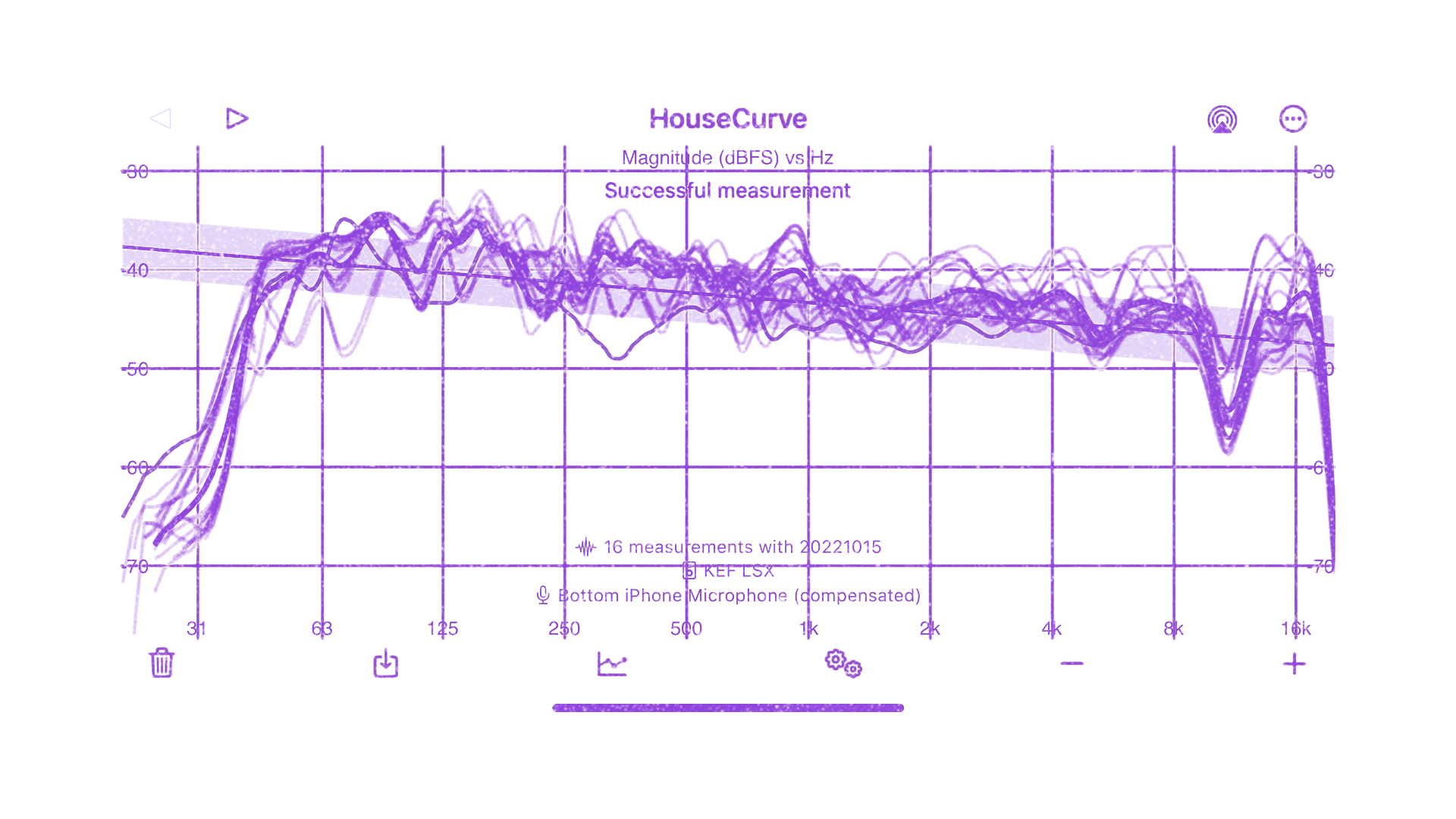
Credit: HouseCurve
The microphone found inside most smartphones is a tiny condenser microphone that’s designed to capture clear audio for phone calls, voice commands and general audio recording.
That’s why they’re calibrated to record the full range of human hearing, giving them a frequency response of 20Hz to 18KHz.
But, given the small size of the condenser microphone and its tendency to pick up a lot of background noise, smartphones will struggle to produce high-resolution recordings of more complex recording environments.
That’s why your bedroom vocal recording might sound way better than a voice memo you took at a rock concert—there’s so much more noise to accurately capture.
Polar pattern
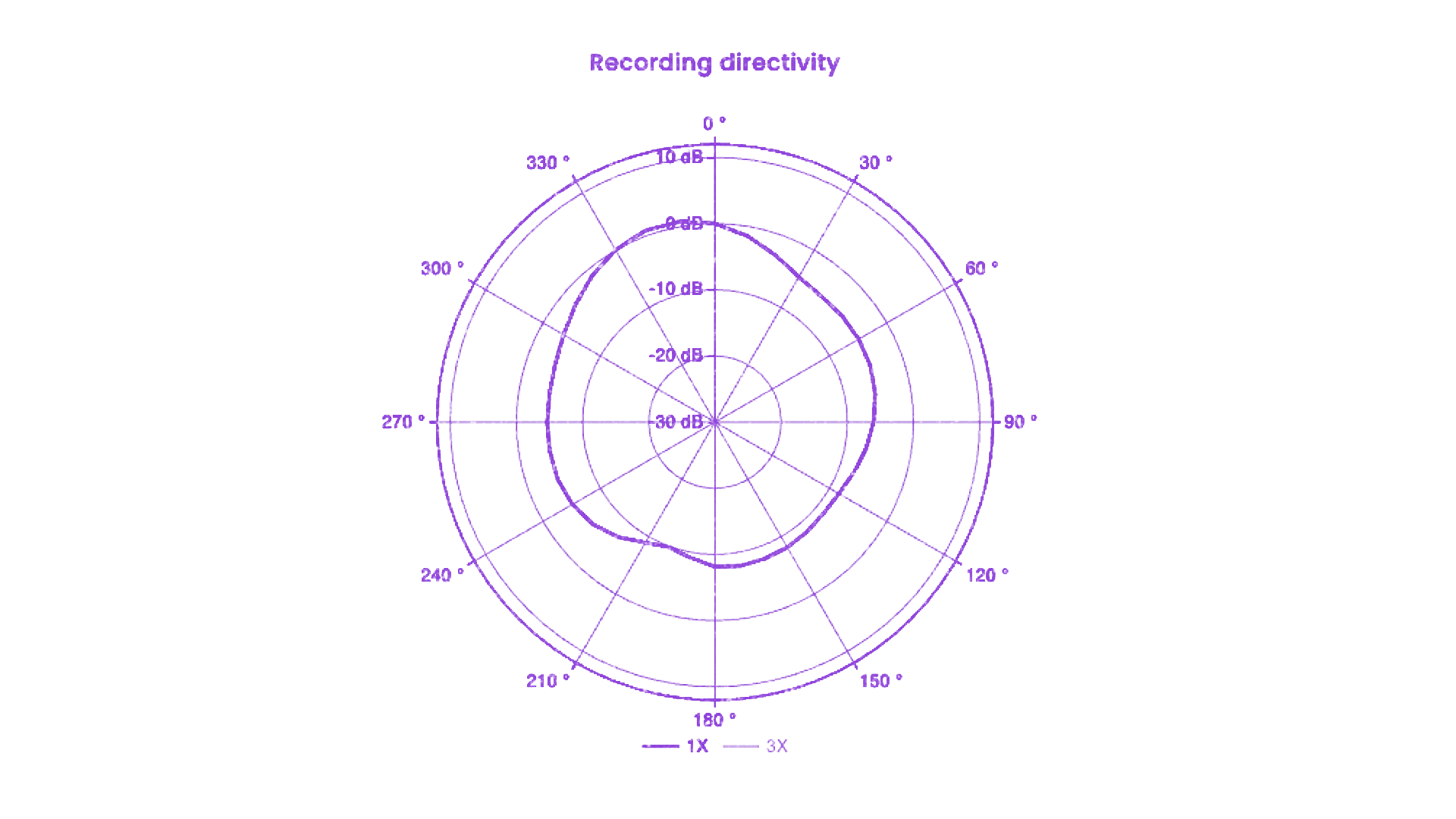
Credit: DXoMark
Your smartphone’s polar pattern is strictly omnidirectional—meaning you don’t have to point it at anything, it’ll simply record everything around it.
For practical reasons, this makes sense, since your phone needs to “hear” voice commands coming from anywhere.
In a recording context though, this will produce muddier recordings with lots of background noise.
What our testing says
In our tests, we found that in a controlled, quiet environment most smartphones can produce a decent recording considering how small and cheap these microphones are.
Of course, the size of their tiny diaphragm can sometimes produce thin, harsh-sounding recordings.
In more sonically dense environments, like with a live band or with bass-heavy instruments, your smartphone will struggle to capture a high resolution of sound, but it still will be able to pick up something understandable.
Overall, considering that the mic in your smartphone is free (assuming you already own one), there’s no shame in using one to write demos and arrange tunes with the help of an app before going to a professional recording studio.
6. RODE NT1: Best Budget Large-Diaphragm Condenser
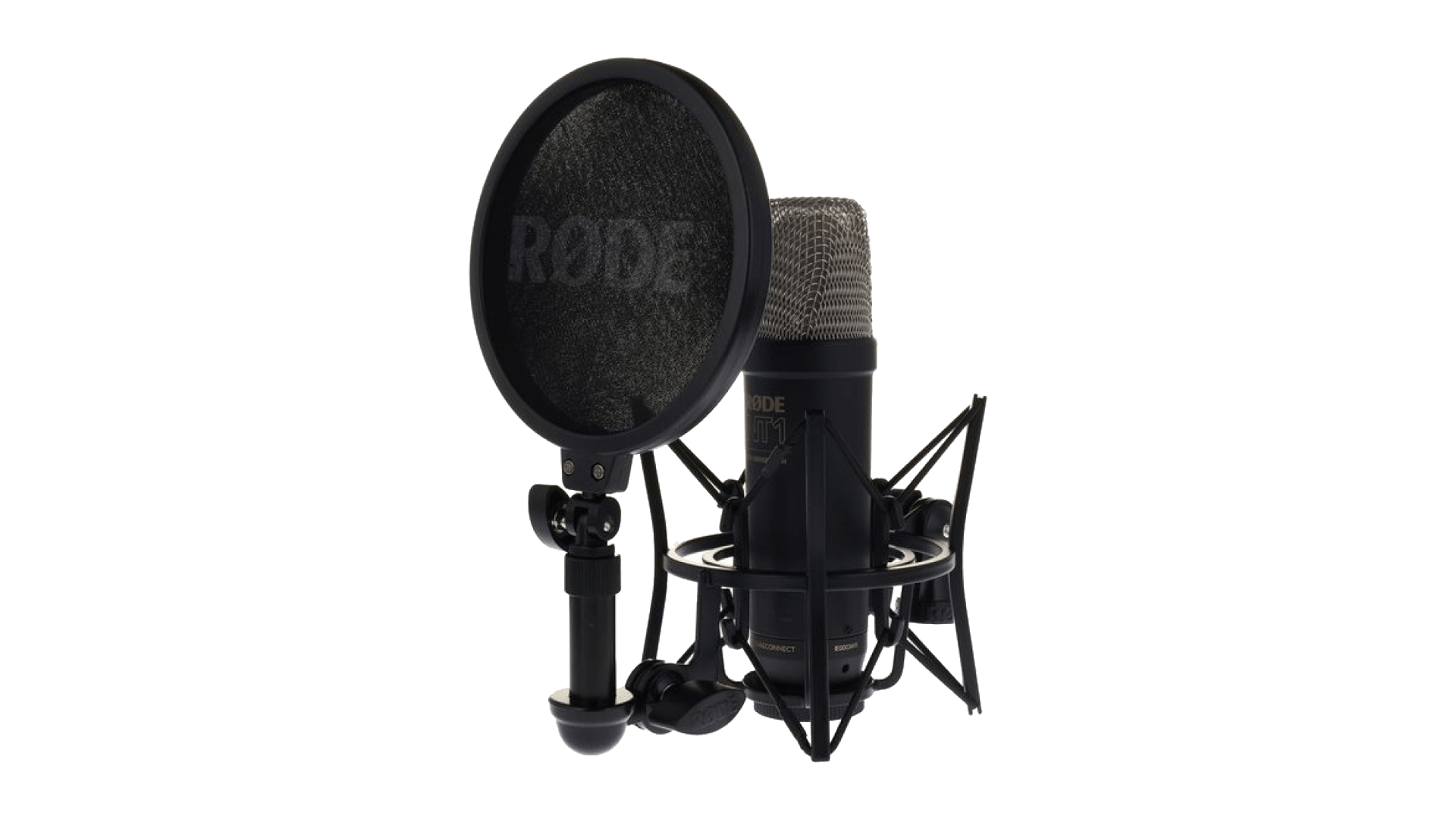
Quick overview of the RODE NT1
| Type: | Large-diaphragm condenser |
| Polar pattern: | Cardioid |
| Frequency response: | 20Hz - 20kHz |
| Additional features: | Iconic vintage sound |
| Suitable for: | Suitable for all vocal styles |
| Price: | $219.00 |
Pros
- Smooth, warm, vintage recording qualities
- Well-optimized for vocal recording
- Very low internal noise level
- Best affordable option among large-diaphragm condensers
Cons
- Not as versatile as other mics for non-vocal recordings
About the RODE NT1
Among home studio producers and bedroom pop recordists, the RODE NT1 might be one of the most popular microphones on the market right now.
For good reason, artists love its clean look and reliable sound quality. The NT1 was inspired by the original vintage sound of the first generation of NT1s that was released in the 90s.
If you’re looking to bring vintage recording tones into your home studio on a budget, this is a great microphone to get your hands on.
Frequency response
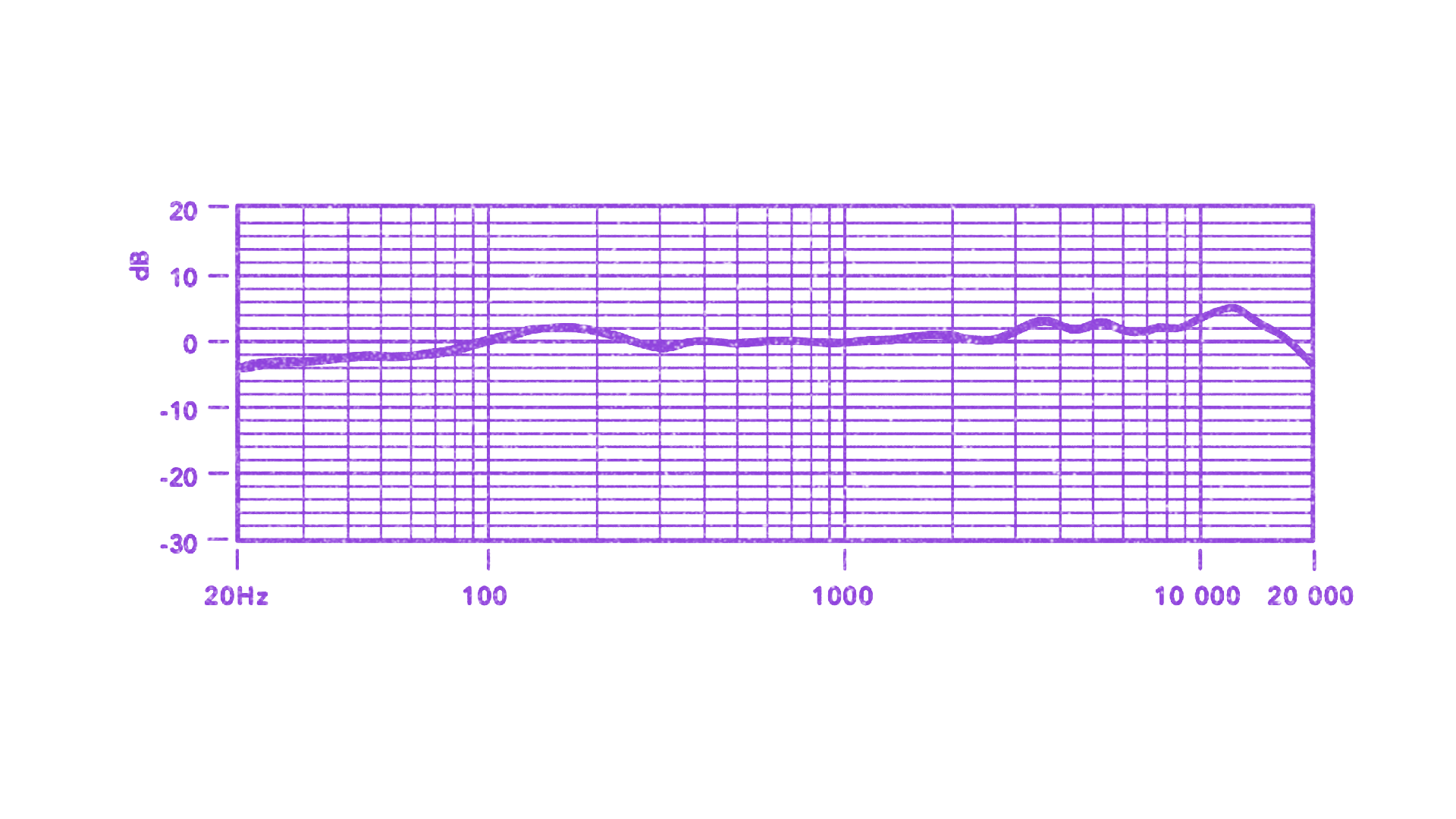
Credit: Rode
The NT1 has the flat frequency response associated with condenser microphones from 200Hz to 2KHz.
At 2KHz and above the NT1 boosts frequencies to add shimmer and sparkle to the high end.
Below 200Hz the NT1 features a very light roll-off into the bass frequencies, leaving plenty of bass response.
In general, the mic offers a lot of mid-range clarity, with pleasing airy brightness at the top end, giving it everything you need to produce impressive vocal recordings.
Polar pattern
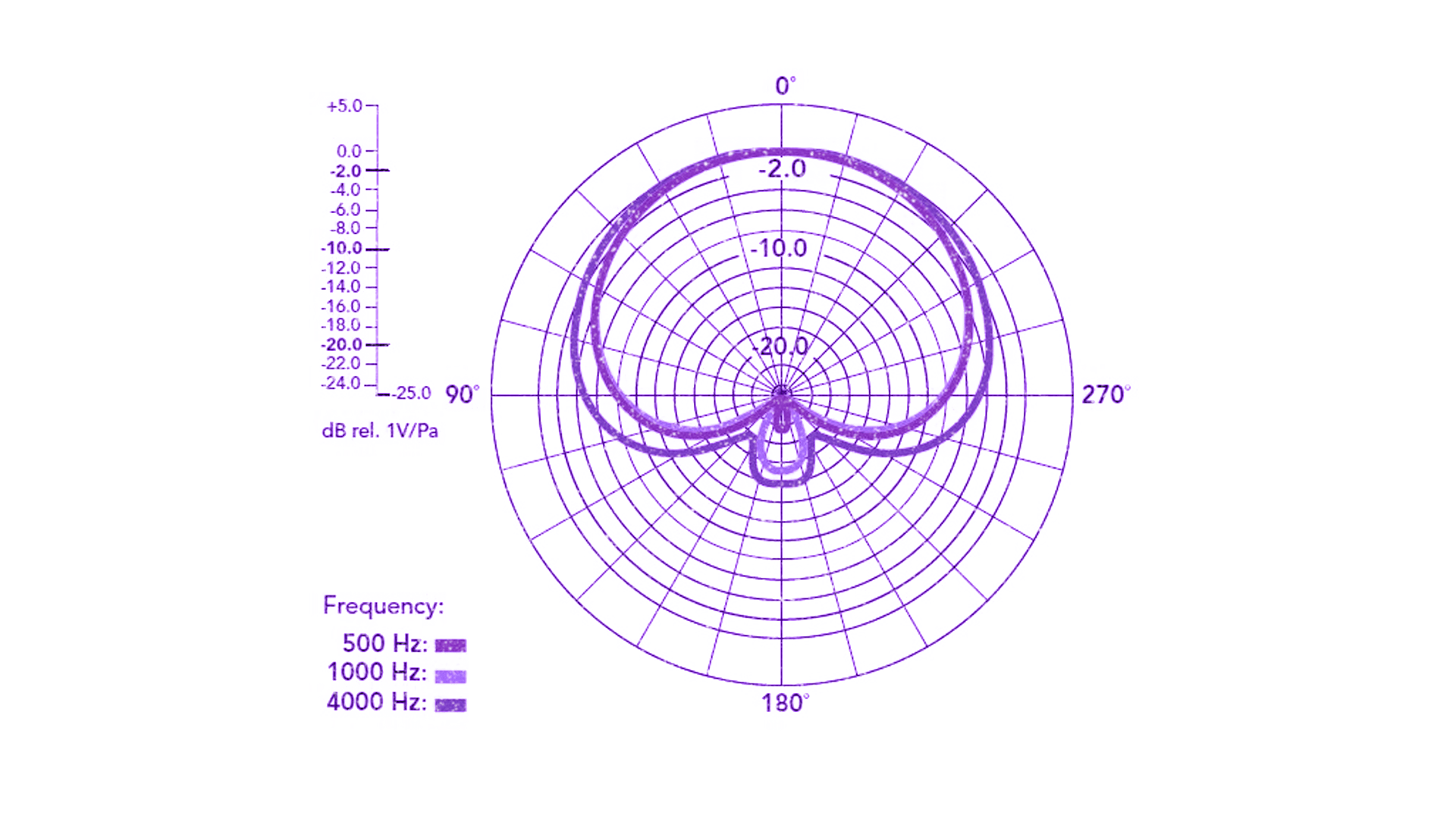
Credit: Rode
The NT1 uses a standard side-address cardioid pattern that makes sense for a dedicated vocal recording mic.
For a lower-cost mic, it makes remarkably little electromechanical noise, making it a great choice for recording quiet sound sources.
What our testing says
The NT1 makes for a comprehensive microphone that’s an excellent choice for recording applications while proving fairly effective at recording instruments like guitar or electric guitar.
We found that NT1 accurately produces the warm, vintage-sounding recording tone that most home studio producers are searching for these days.
At its price point, this microphone is all you need to bring studio-quality sound into your music-making workflow.
If you get this, consider spending a bit extra on the “recording package” which includes an excellent shock mount and pop-filter.
7. Electro-Voice RE-20: Best Mic for Rap Vocals
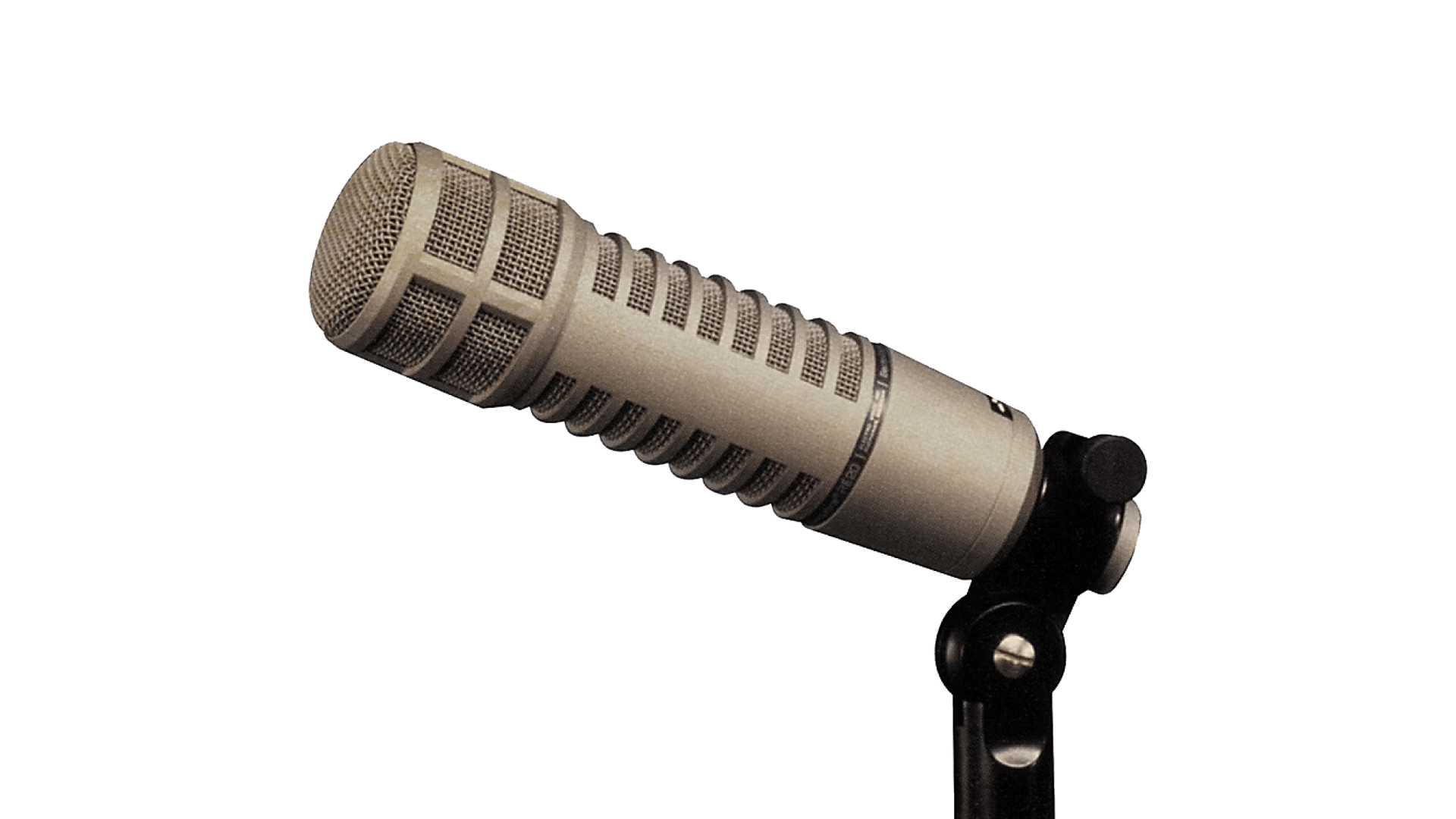
Quick overview of the Electro-Voice RE-20
| Type: | Dynamic |
| Polar pattern: | Cardioid |
| Frequency response: | 45 Hz - 18,000 Hz |
| Additional features: | Large diaphragm, humbucker coil |
| Suitable for: | Rap, spoken word, pop, R&B vocals |
| Price: | $449.00 |
Pros
- Trusted studio microphone
- Durable workhorse that sounds good on vocals and instruments
- Limited proximity effect
- Internal humbucker virtually eliminates electromechanical noise
Cons
- Not quite as dialed in for vocals as a more expensive condenser
- Frequency response isn’t as flat as a condenser
About the Electro-Voice RE-20
A long-time staple in many studio and broadcast settings, Electro-Voice’s RE-20 remains a go-to studio microphone for many producers.
The RE-20 works well for a variety of vocal recording applications while also being well suited for a number of instrument recording situations.
What makes this dynamic microphone particularly unique is that much of its design inspiration comes from large diaphragm condenser microphones.
This is a dynamic mic that comes with many of the features of a condenser microphone—a high degree of sensitivity, flat frequency response, and high presence when recording quiet vocals.
But it keeps the advantages of a dynamic microphone—no phantom power required, reduced proximity effect issues and a higher level of durability.
Frequency response
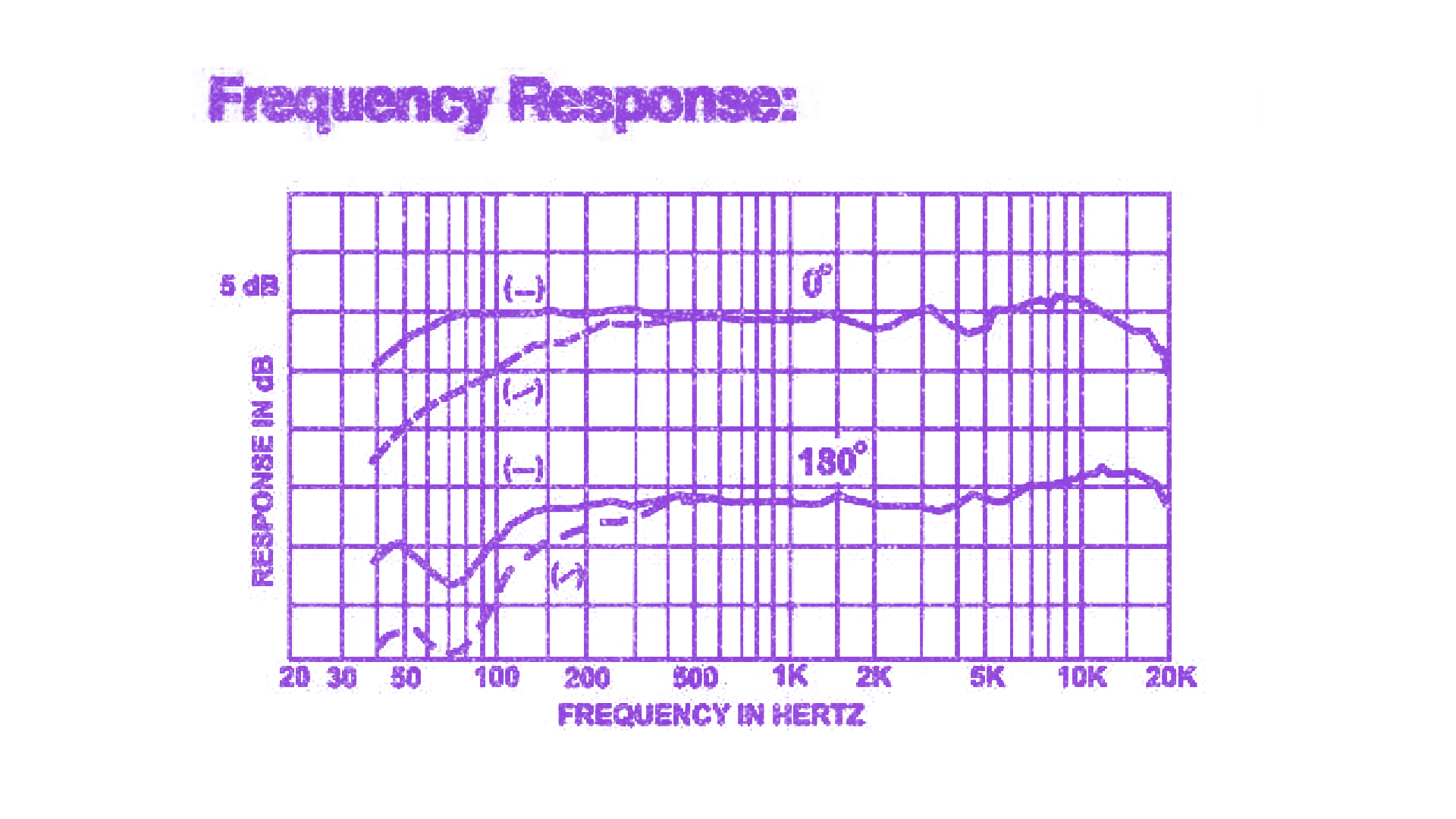
Credit: Electro Voice
The RE-20 does not have as flat of a frequency response as the condenser microphones on this list, but for a dynamic microphone, it’s still relatively reliable.
At the low end, the mic features a slight bass boost from 80Hz to 250Hz, which is handled nicely by its larger diaphragm.
In the high-end, the mic uses a subtle boost at 5KHz with a roll-off of frequencies at 10KHz.
While the RE-20 isn’t as optimized as high-end condenser mics for recording the most nuanced and sparkling vocal take right out of the gate, the mic certainly holds its own.
It handles the low end very well and adds enough brightness at the high end to make it a contender against big-ticket studio condensers.
Polar pattern

Credit: Electro Voice
Like all dynamic microphones, the RE-20 uses a cardioid polar pattern.
What makes this mic particularly good for rap vocals is that it handles proximity and exaggerated plosives very well.
This means the mic tends to reduce pop and bumping sounds from up-close spoken word takes, so it sounds good when recording at proximity.
Its good sound at proximity is also partly due to its ability to effectively reject background noise. You can use it in loud rooms and produce convincing vocal takes in a live setting even with a band in the background.
What our testing says
The RE-20 is a great choice if you need a durable microphone that produces excellent recordings of both vocals and instruments.
It’s a durable workhorse that’ll last you years if you take decent care of it.
Overall, the mic is well suited to produce studio vocal takes, especially since its qualities as a dynamic microphone make it well suited for most vocals. It’s especially useful for rap, R&B, spoken word and pop.
8. Avantone Pro CV 12: Best Budget Tube Condenser
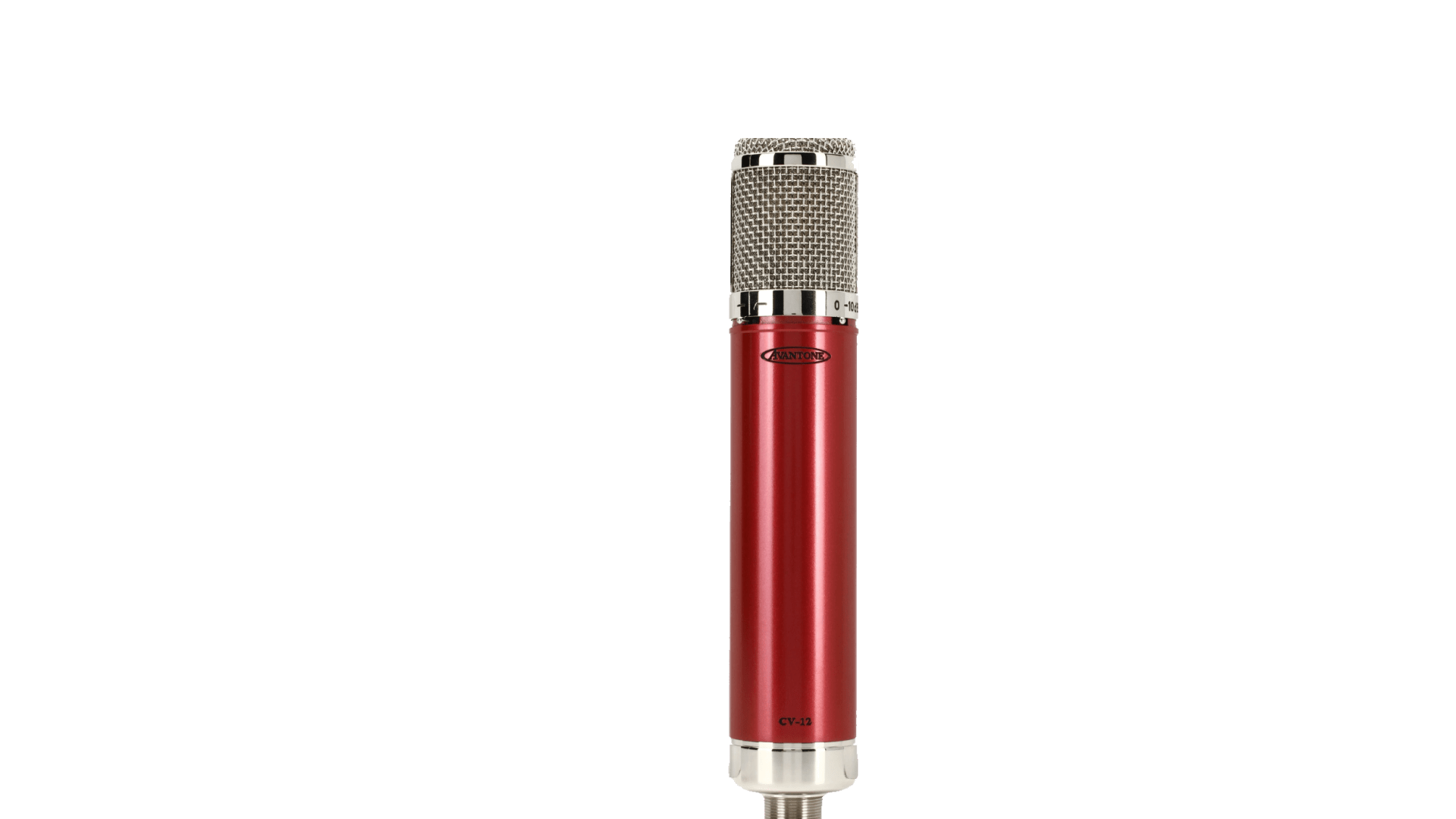
Quick overview of the Avantone Pro CV 12
| Type: | Tube Condenser |
| Polar pattern: | Nine patterns offered |
| Frequency response: | 20Hz - 20KHz |
| Additional features: | Polar pattern switch, included accessories |
| Suitable for: | Pop, country, R&B, jazz |
| Price: | $399.00 |
Pros
- Vacuum tube adds solid warmth and character
- Well suited for vocalists with a wide dynamic range
- Proximity effects weren’t unpleasant or harsh
- Very affordable compared to other tube mics
Cons
- Tubes take a while to warm up
- Tube microphones are breakable
About the Avantone CV-12
We couldn’t write up an article on the best microphones for vocals without talking about at least one tube microphone, so that’s why Avantone’s CV-12 made it on this list.
The CV-12 was modeled after AKG’s much more expensive C12, offering the same warmth and saturation typical of the C12 at a fraction of the price.
Considering this mic was used in a handful of Taylor Swift tracks, I think it’s safe to say that this mic delivers.
The CV-12’s main features are its nine polar pattern options and, of course, its internal vacuum tube. This transistor is intentionally designed to produce much lower electromechanical noise.
Frequency response
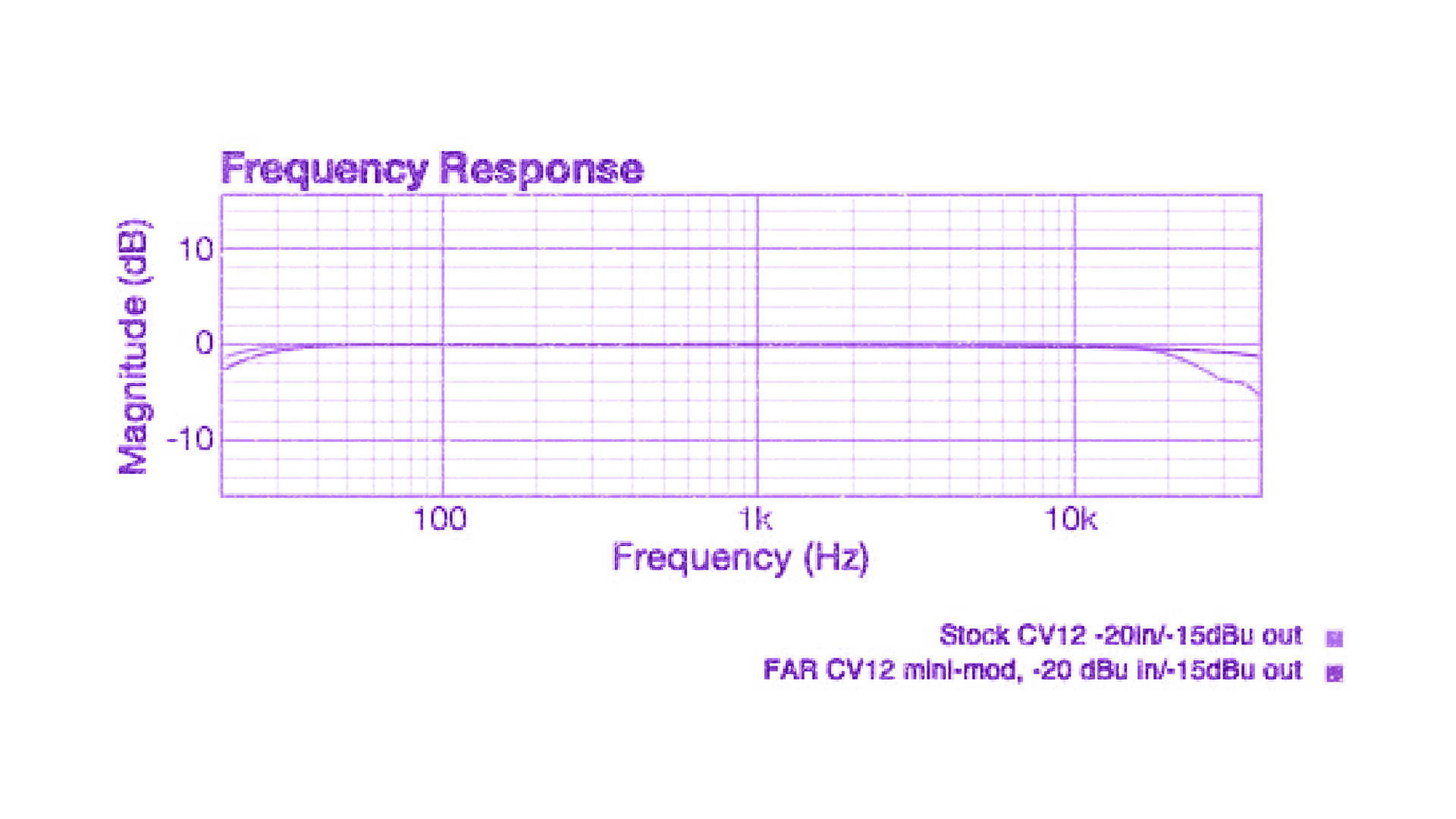
Credit: Avantone
The frequency response of the CV-12 varies between each of its nine polar patterns.
I’ll share the frequency response for its cardioid version, since this is the most common setting used for vocal recording.
In general, the CV-12 features the smooth and flat frequency response you might expect from a condenser microphone.
At the high end, the CV-12 features a subtle boost at 600Hz and 3KHz, and a more intense boost starting at 9KHz.
This attenuation helps to add sparkle to vocal recordings while driving its internal tube for added saturation and warmth.
In the low end, the mic rolls off bass frequencies starting at 40Hz to help clean up any muddiness and proximity effects, while still maintaining a ton of character in the bass.
Polar pattern
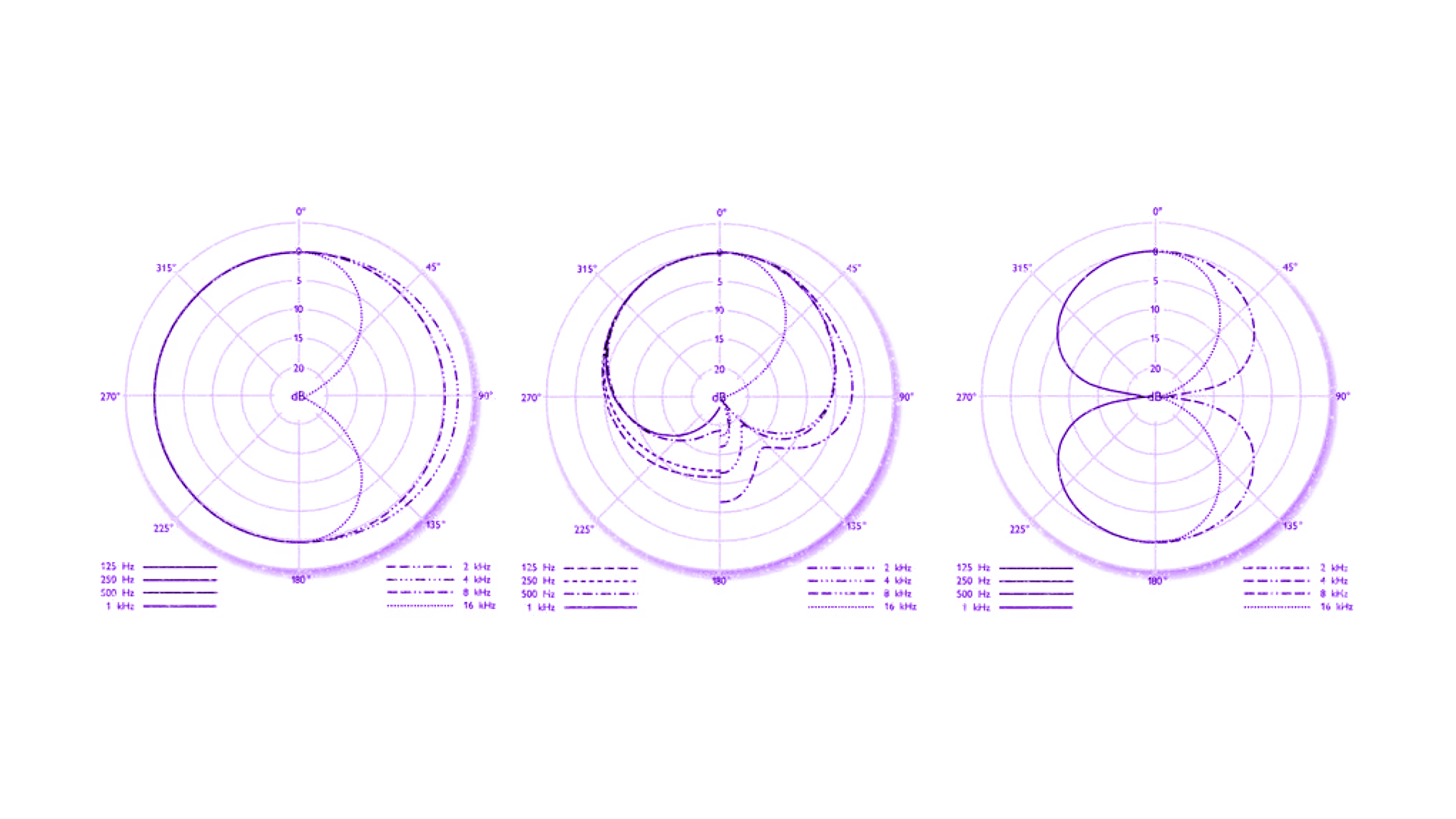
Credit: Avantone
The CV-12 is unique in its ability to switch between nine unique polar patterns.
Each of the patterns fall into variations on one of three categories—omnidirectional, cardioid or figure-8.
When it comes to vocal recording, you’ll mostly use its cardioid setting. But for certain situations where you’re recording two or more vocalists, you may want to use its omnidirectional setting.
What our testing says
The Avantone CV-12 is highly optimized for vocal recording, especially for vocalists who have a high dynamic range. It will still sound good on instruments like guitar and piano.
The condenser is responsive to proximity effects without adding unpleasant plosive sounds into its recordings.
We also found that its tube added a level of drive that sounded great at across a wide dynamic range, creating a warm and saturated vocal tone.
Overall, if you’re looking to add a tube mic to your microphone cabinet on a budget, this one should be on your radar.
9. AKG C214: Most Versatile Studio Microphone
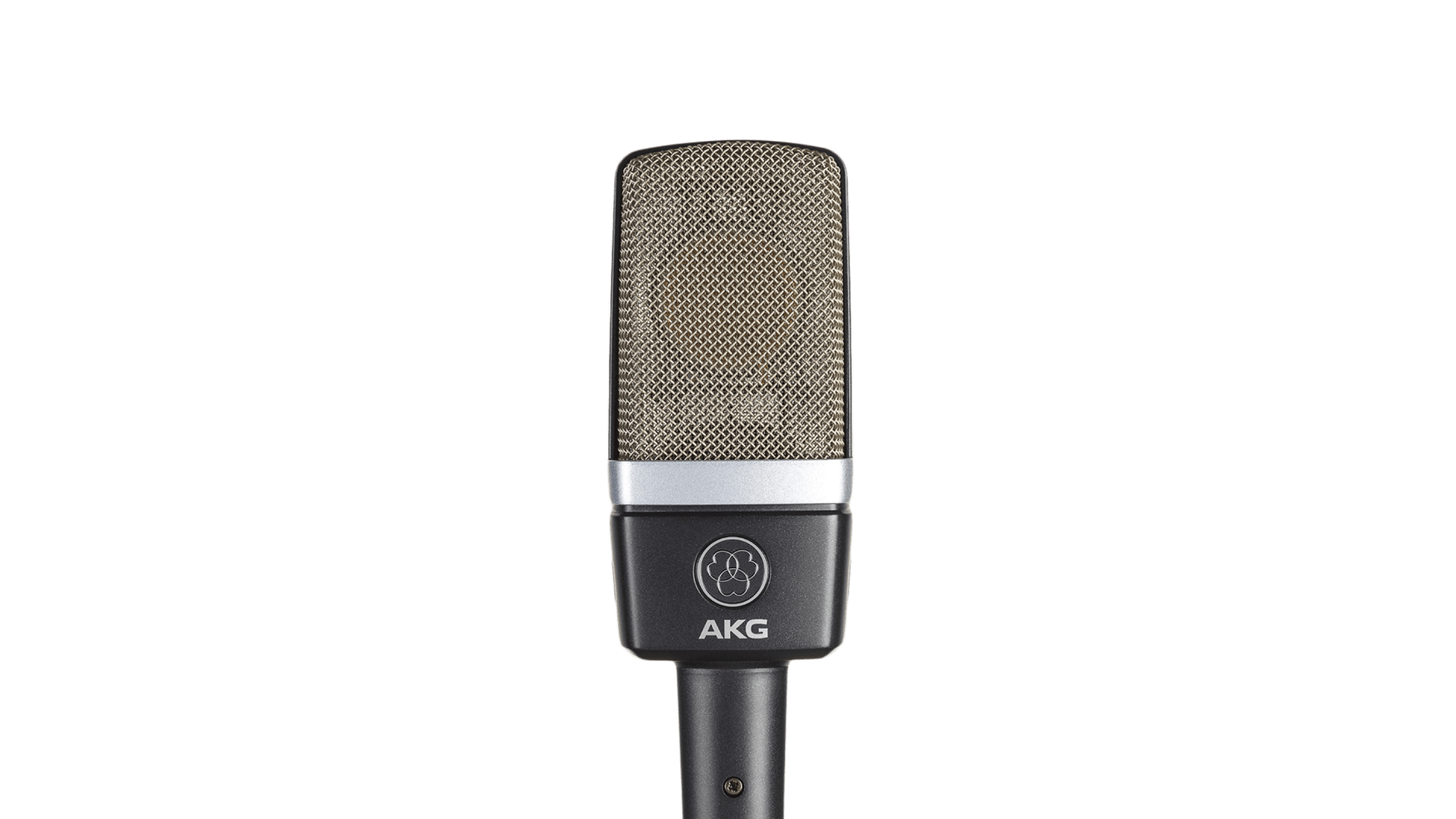
Quick overview of the AKG C214
| Type: | Large Diaphragm Condenser |
| Polar pattern: | Cardioid |
| Frequency response: | 20Hz - 20KHz |
| Additional features: | Internal suspension, bass cut |
| Suitable for: | Pop, rock |
| Price: | $479.00 |
Pros
- The more affordable cousin of AKG’s iconic C414 microphone
- Many applications in a studio context including vocals
- -20db switch to eliminate proximity effect and background noise
- Bass cut switch to roll off unwanted bass frequencies
Cons
- Not 100% optimized for vocal recording
- Fewer features than the C414
About the AKG C214
AKG’s C214 is a more affordable option that’s based on its high-tier C414 line of microphones (which are also excellent).
We found that the large-diaphragm condenser microphone is a capable studio workhorse that will clearly and accurately capture a wide range of sounds, including vocals.
Frequency response
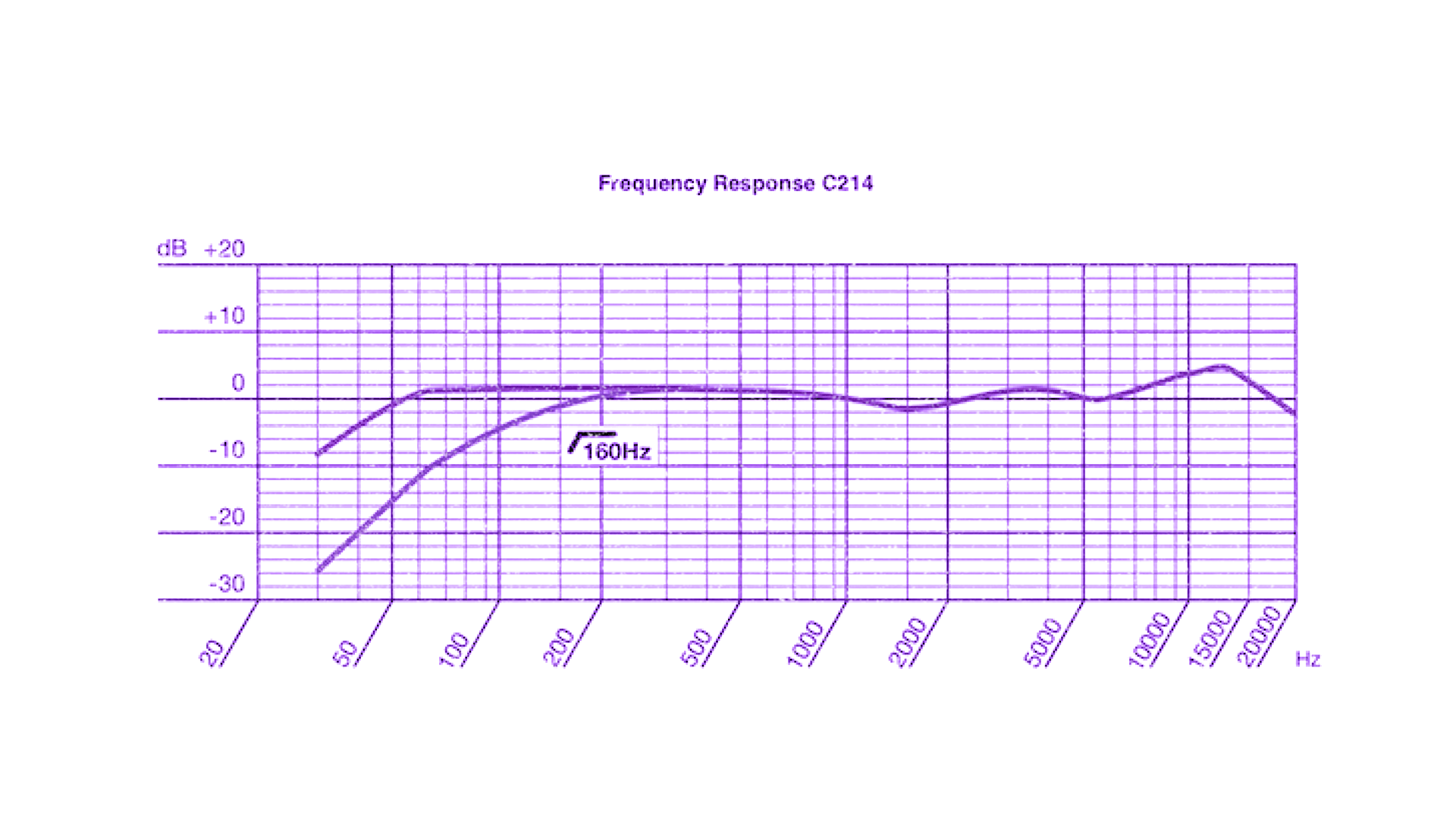
Credit: AKG
The C214 has a flat frequency response with a slight boost at 10KHz, a slight cut between 1KHz and 3KHz.
After 15Khz the microphone rolls off to mitigate any harshness from the frequencies boosted in the high end.
For recording low-end frequencies the mic has a high-pass filter switch that gives the option to roll off bass frequencies at either 60Hz or 160Hz.
Overall, the mic produces a sparkling, bright tone that’s likely due to the slight boost at 10KHz and its rolled-off bass frequencies.
The subtle cut in the mid-highs mic produces “scooped” sounding recordings that are less muddy, and brighter at the high end while maintaining a full low end.
Polar pattern
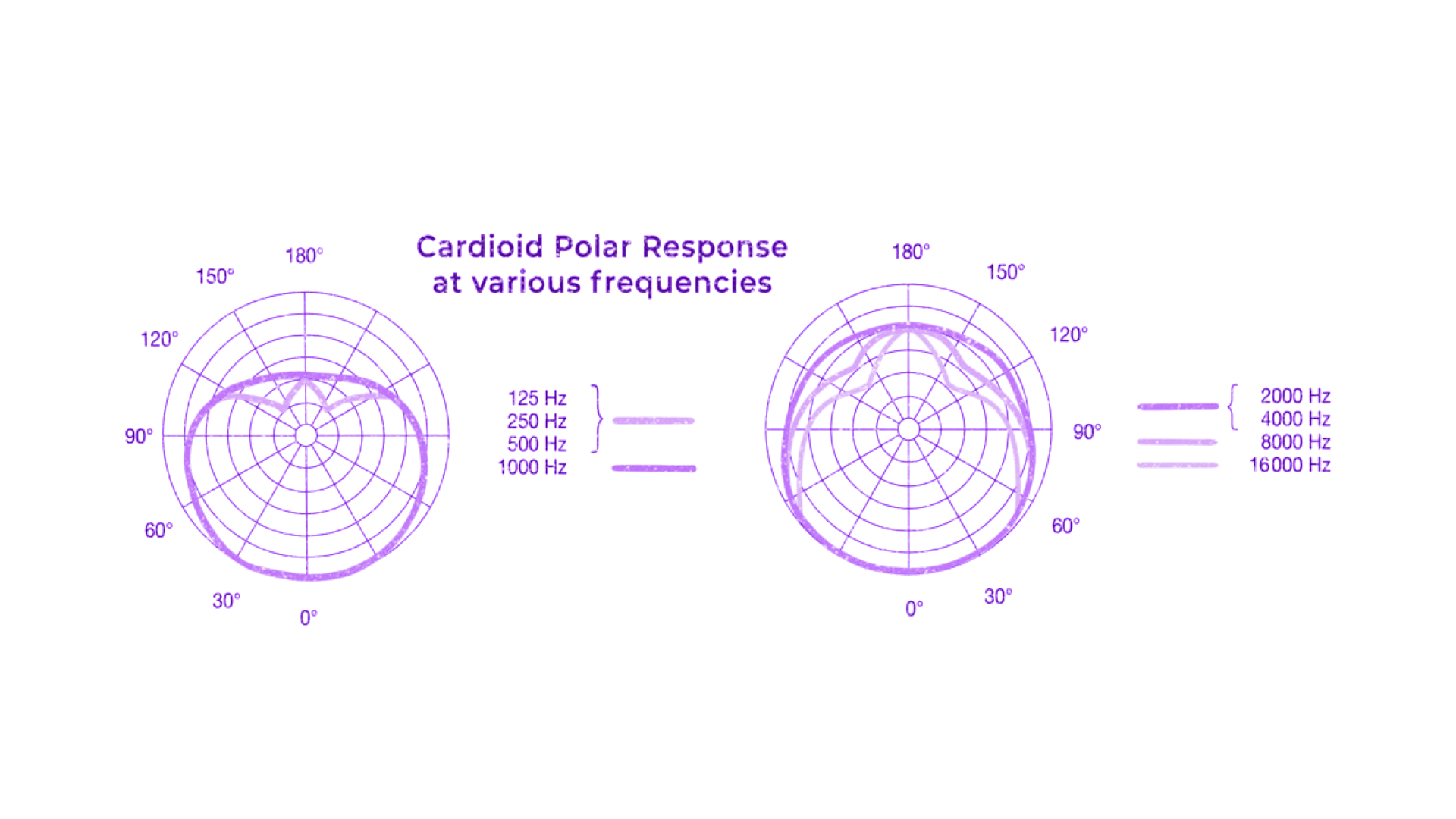
Credit: AKG
Compared to its C414 counterpart, the C214 is limited to a cardioid polar pattern, making the mic more directional.
However, like all condenser microphones, this mic is very sensitive and will pick up quiet sounds and background noise very quickly.
To combat this in situations where a close mic sound with minimal bleed is required, the mic comes with a switch that cuts recording output by -20db, which helps the mic reject more background noise.
Turning the switch on also has the added benefit of reducing proximity effect sounds common in sensitive large-diaphragm microphones.
There’s a good chance that you’ll have this switch on if you choose to record vocals with this mic.
What our testing says
If you’re getting started with home recording and need a mic that works well in many situations including vocal recordings, we think this is a great and affordable option.
While the mic is not 100% optimized for vocal production, you can handily use it on a lot more than just vocals. Use it on guitar, horn or drums and expect very good recording qualities.
At its price point, we think it makes a good deal for the home recording artist looking to level up a home recording studio with a lot of instruments9
10. Coles 4038: Best Mic for Jazzy Vintage Vocal Tone
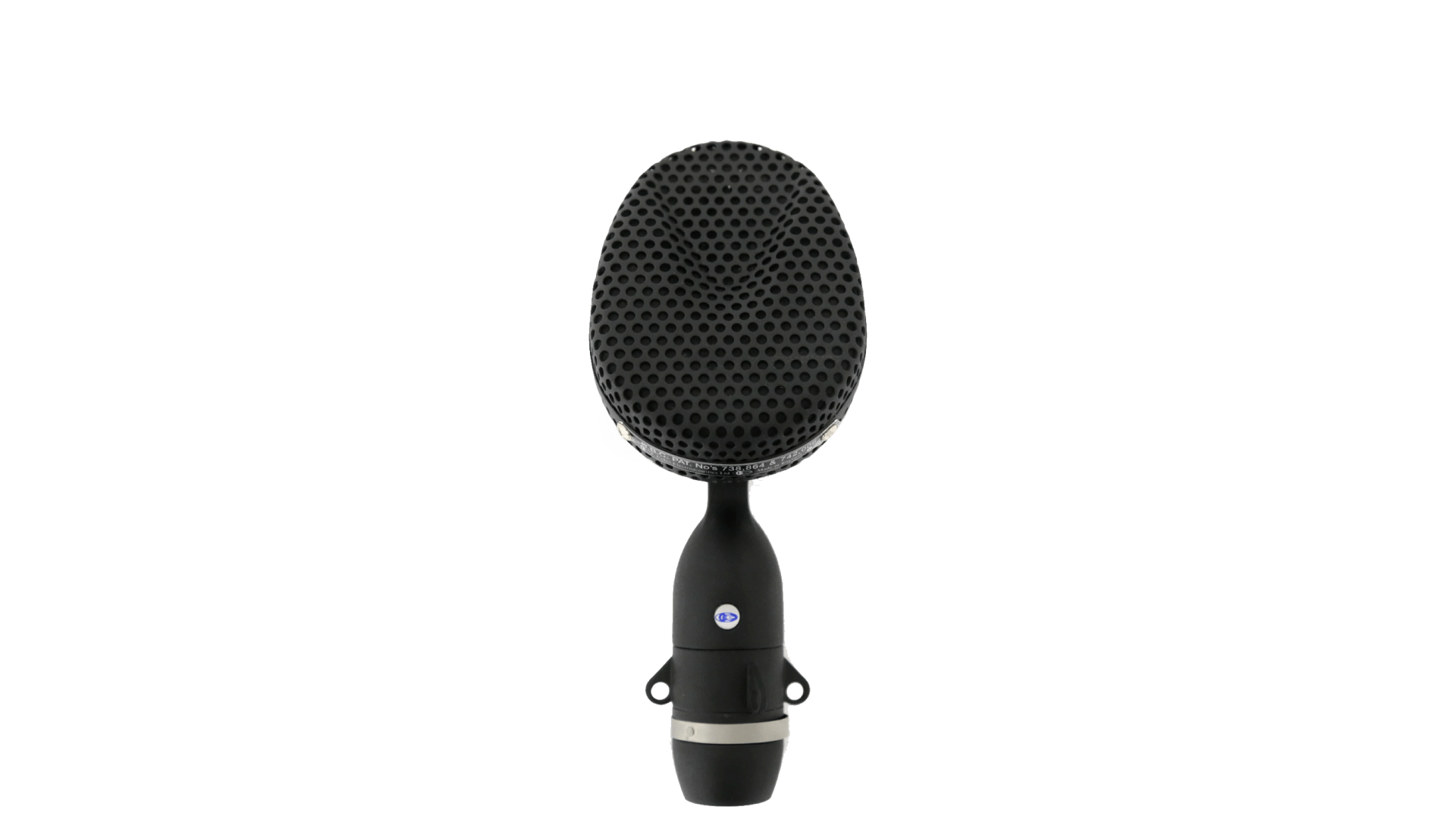
Quick overview of the Coles 4038
| Type: | Ribbon |
| Polar pattern: | Figure-8 |
| Frequency response: | 30Hz - 15KHz |
| Additional features: | Low distortion, flat frequency response |
| Suitable for: | Spoken word, smooth vocals, jazz vocals |
| Price: | $1,482.00 |
Pros
- Professional studio standard microphone
- Trusted and reliable for broadcast and vocal recording purposes
- Minimal distortion, no hum
- Figure-8 polar pattern opens up stereo recording options
- Produces clear, warm and classic vocal recordings
Cons
- One of the more expensive options on this list
- Ribbon is breakable
About the Coles 4038
Originally made as the primary microphone used for broadcasting at the BBC, the Coles 4038 is an excellent choice for smooth, croony, jazz-styled vocals.
This mic is notable for being the only ribbon microphone mentioned on this list, and arguably this is what also makes this mic sound so unique and interesting.
If you like a warm tone and tend to sing a middle register, this microphone makes for an excellent choice, especially for any genre demanding a more vintage, jazzy sound.
Frequency response
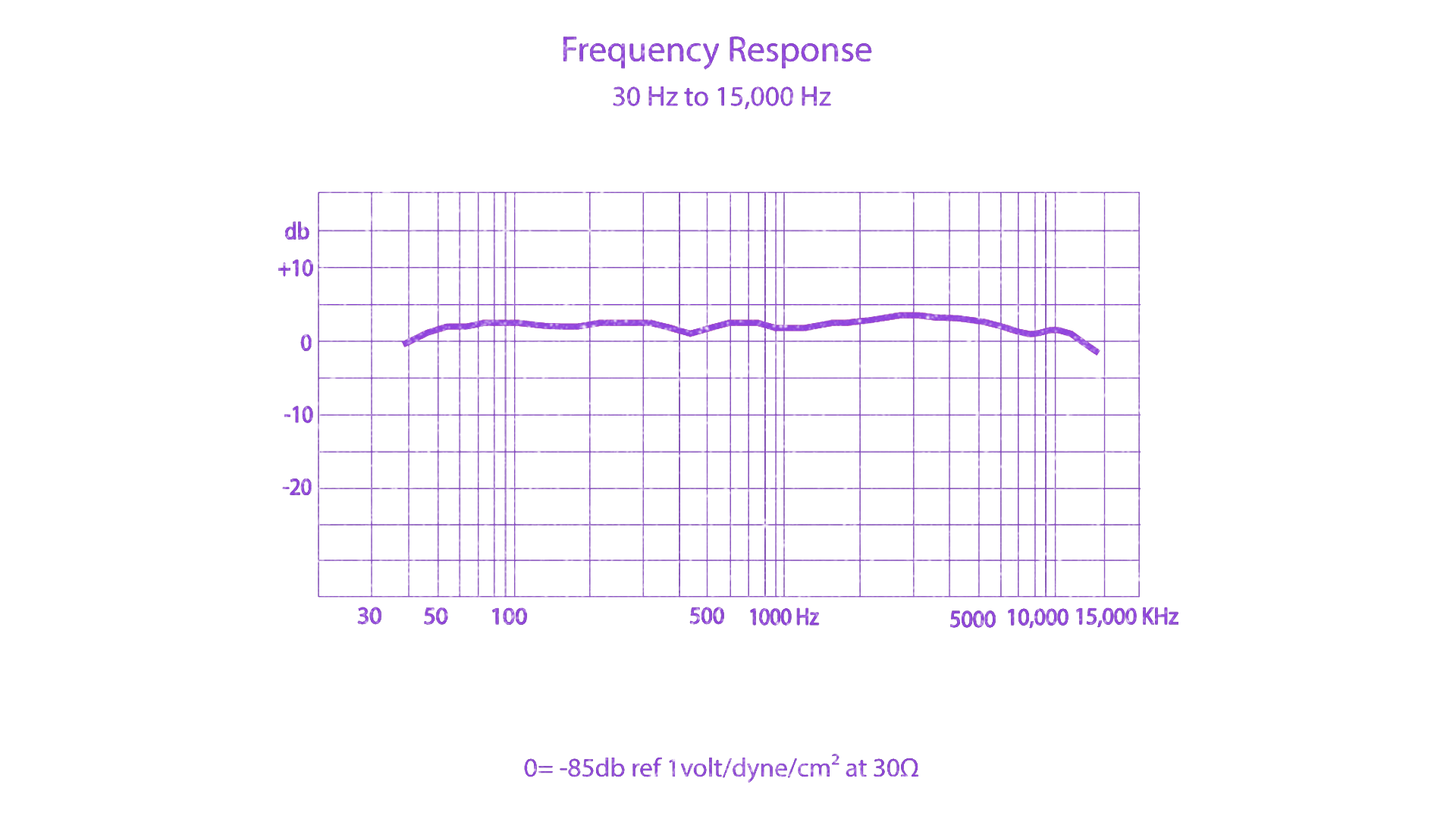
Credit: Coles
The Coles 4038 is known for its particularly flat frequency response. This makes it optimal for recordings where a clear range of frequencies with minimal transient distortion is necessary.
In other words, the mic is well suited for smooth-sounding vocal styles since it effectively captures transients without distorting them.
In general, the flat response tends to produce a very natural-sounding recording with little distortion or deviation from the actual sound.
Polar pattern
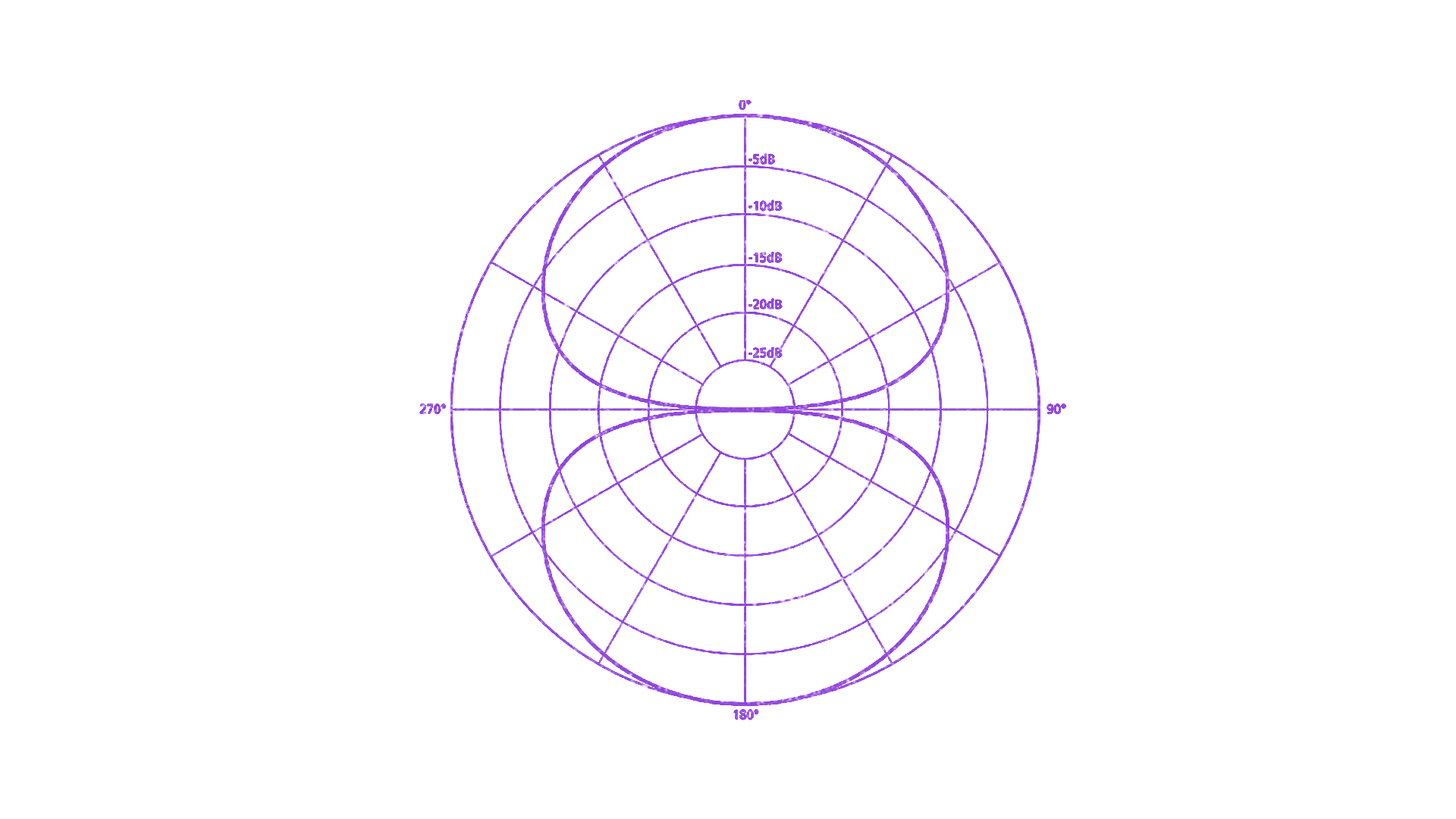
Credit: Coles
The Coles 4038 uses a bi-directional, figure-8 polar pattern, meaning it will record anything in front of and behind it.
This helps eliminate unwanted bleeding from side reflections and also opens the option to record in stereo when two 4038 microphones are used.
What our testing says
For vocal styles like jazz, folk and adult-contemporary that demand, smooth, warm and accurate re-production, we found the Coles 4038 to be particularly effective.
Its ability to eliminate transient distortion helped the microphone produce incredibly clear, smooth and warm vocal recordings.
So, if you’re prepared to invest in a studio-quality microphone that delivers warm, smooth and clear vocal tones with minimal distortion, the Coles 4038 is worth your time.
11. Neumann TLM 103: Best High-End Microphone
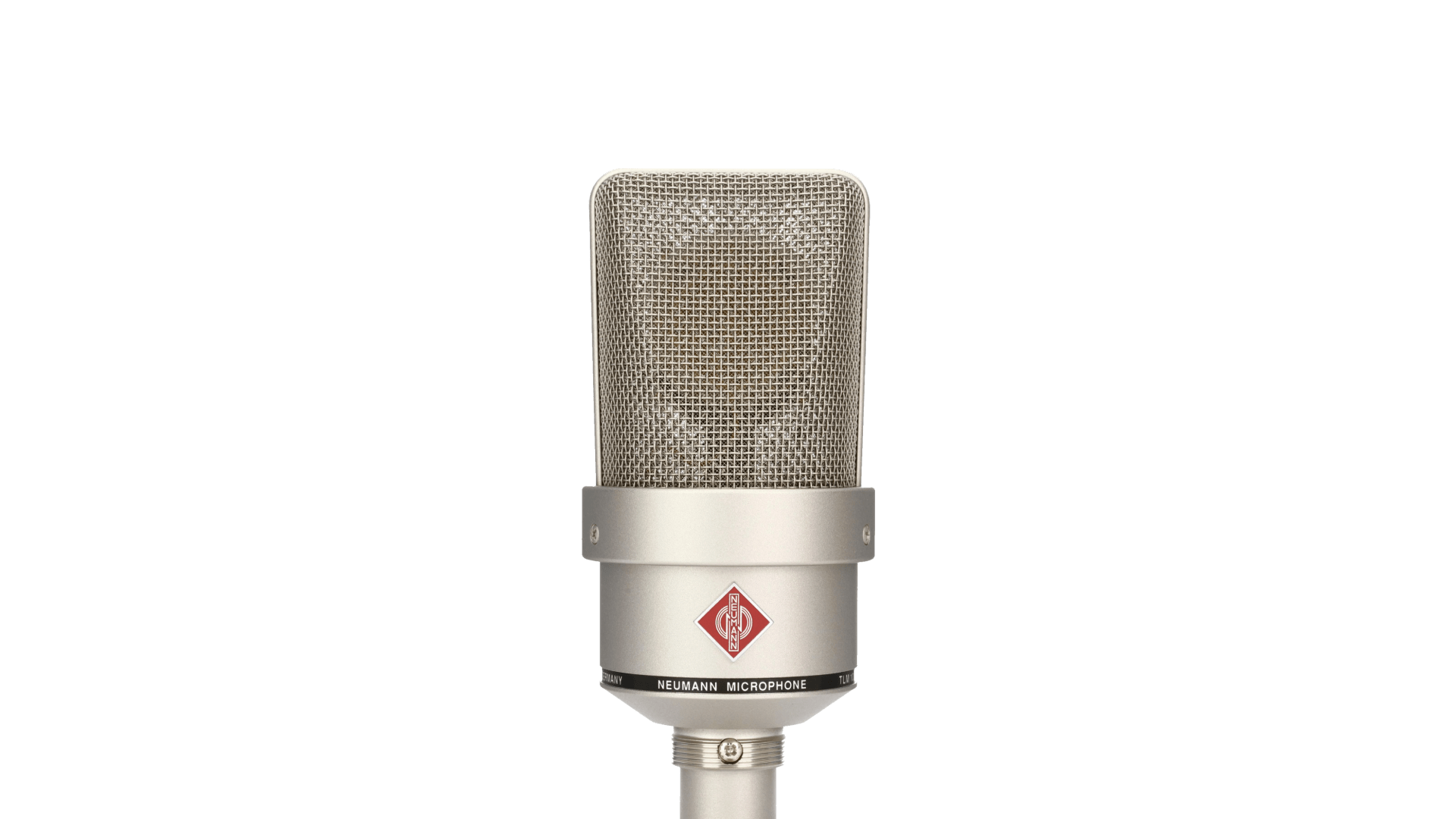
Quick overview of the Neumann TLM 103
| Type: | Condenser |
| Polar pattern: | Cardioid |
| Frequency response: | 20Hz -20KHz |
| Additional features: | Extremely low mechanical noise |
| Suitable for: | Pop, folk, R&B, jazz vocals |
| Price: | $1,195.00 |
Pros
- Trusted by the professionals
- Delivers an incredibly clear and clean vocal tone
- Produces virtually no noise of its own
- Perfect for dynamic vocals requiring a sensitive microphone
Cons
- On the expensive end of this list, but still a fraction of the price of other Neumann mics
- Not as well suited for louder, less dynamic vocals like rap or hardcore
- Sensitivity requires it be used in a sound-treated environment
About the TLM 103
Neumann has long been the industry’s gold standard in professional microphones.
So the release of its somewhat more affordable TLM 103 line of microphones more than two decades ago was a big deal for many recording engineers.
Today, of course, Neumann continues to make its updated version of the pristine condenser microphone, and many top-tier artists gravitate towards it for use on their recordings.
Frequency response
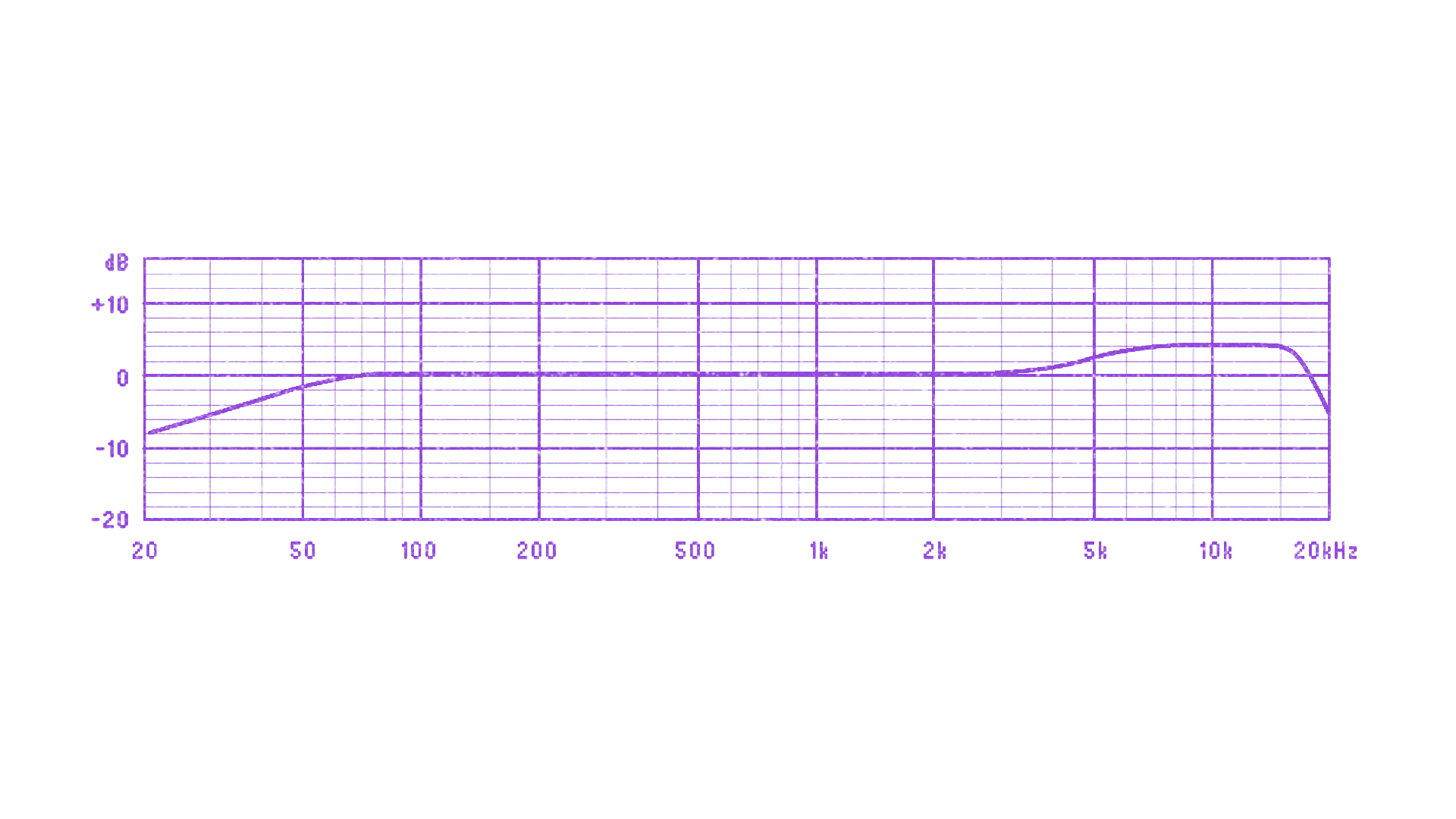
Credit: Neumann
The Neumann TLM 103 has a flat frequency response with a boost at 5K and a rolled-off bass cut starting at 70Hz.
These cuts and boosts were made knowing that this condenser mic is particularly sensitive, so you need to be conscious of the proximity effect coming into play.
The tradeoff of course is that this mic will deliver incredibly clear vocal takes with a high degree of presence in the mix.
A well-placed TLM 103 in the hands of a skilled vocalist and recording engineer will produce a clear, warm and highly dynamic performance.
Polar pattern
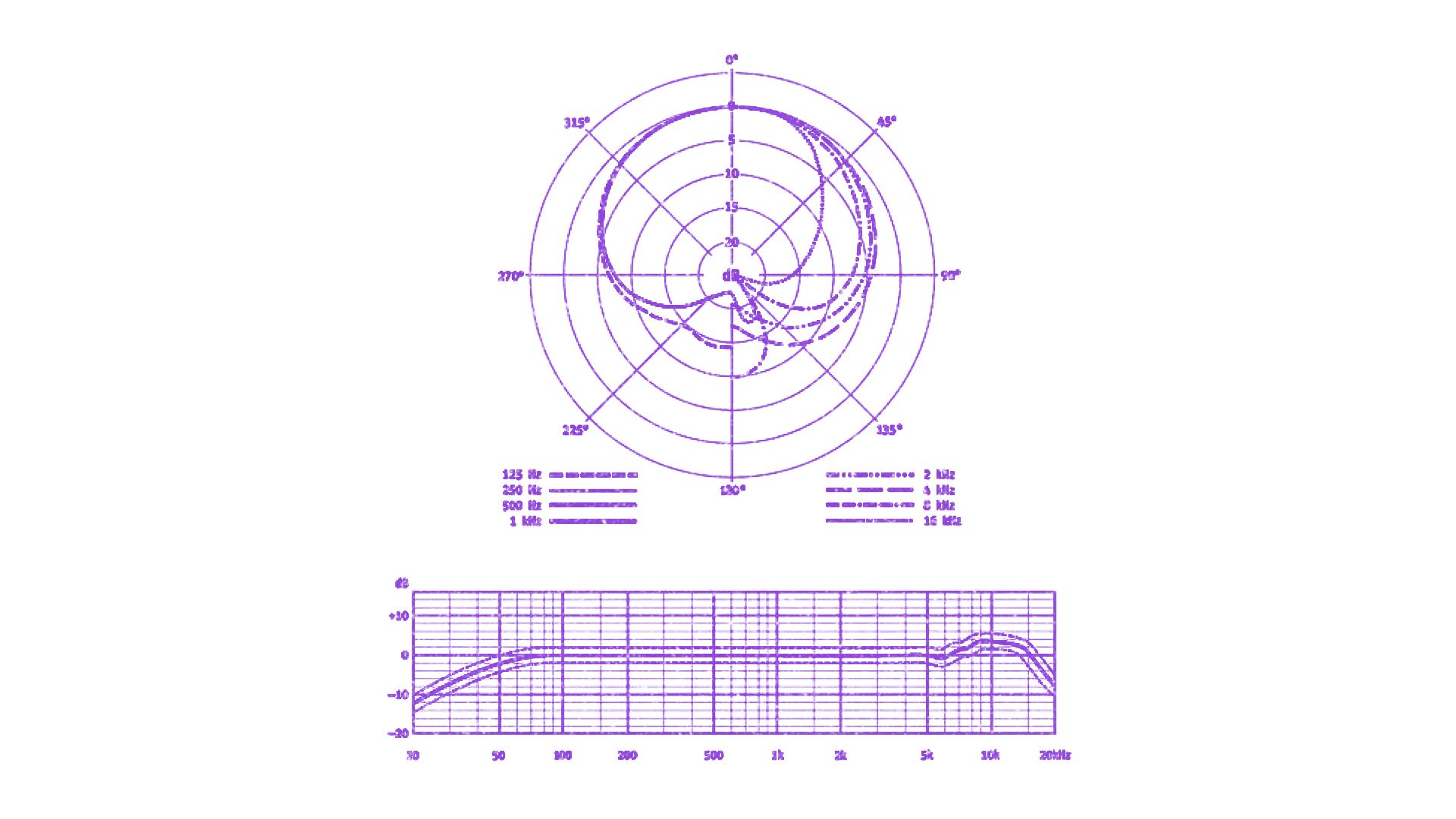
Credit: Neumann
The TLM 103 uses a cardioid pattern, which proves to reject background noise fairly well in studio testing.
Of course, the microphone is very sensitive to any sounds in its foreground, so care must be taken with physical placement to manage proximity effects.
The mic also comes with a built-in grille that helps with eliminating plosives, but given its sensitivity, the use of a pop filter is recommended for vocal recordings.
What our testing says
We think the TLM 103 produces studio-quality recordings that are comparable, if not better in some cases, than Neumann’s much more expensive U87 microphone—the inspiration for the TLM 103.
Despite its higher price tag, this professional-quality microphone comes in at a third of the price when compared to the U87 and U47 lines of Neumann microphones.
If you’re looking to add some Neumann firepower to your mic cabinet, we think the TLM 103 is a perfect entry point.
Get on the best vocal mic
Vocal mics are fun to shop for, and getting yourself a new one is always an exciting moment—what will you create with it?
But remember, while a vocal mic may produce a certain recording quality, the only way to get a good vocal recording is to practice your vocals and develop your tone.
At the end of the day, the most important requirement in a microphone is if it’s well-made and worth the price.
After that, everything is purely personal preference. In other words, do you like how the mic sounds?
Every mic is different. A budget microphone might sound better than a studio mic that costs thousands of dollars. The key is to try a few out and see what works best for you.
Good luck finding the best vocal mic for you!
More reading about recording and producing vocals at home:
- Music Production: Producing and Releasing Your First Song
- The 8 Best Audio Recording Computers For Your Studio in 2026
- Best DAW For Beginners: How to Choose Your First Recording App
- Acoustic Treatment: How to Get a Better Sounding Room
- How to Comp Vocals in Your DAW and 7 Tips for Your Next Comp
- What is Sibilance? 5 Ways To Smooth Harsh Vocals
- Vocal Compression: How to Compress Vocals in 7 Steps
- Double Tracking: How to Thicken Vocals and Instruments
Gear guides, tips, tutorials, inspiration and more—delivered weekly.
Keep up with the LANDR Blog.
